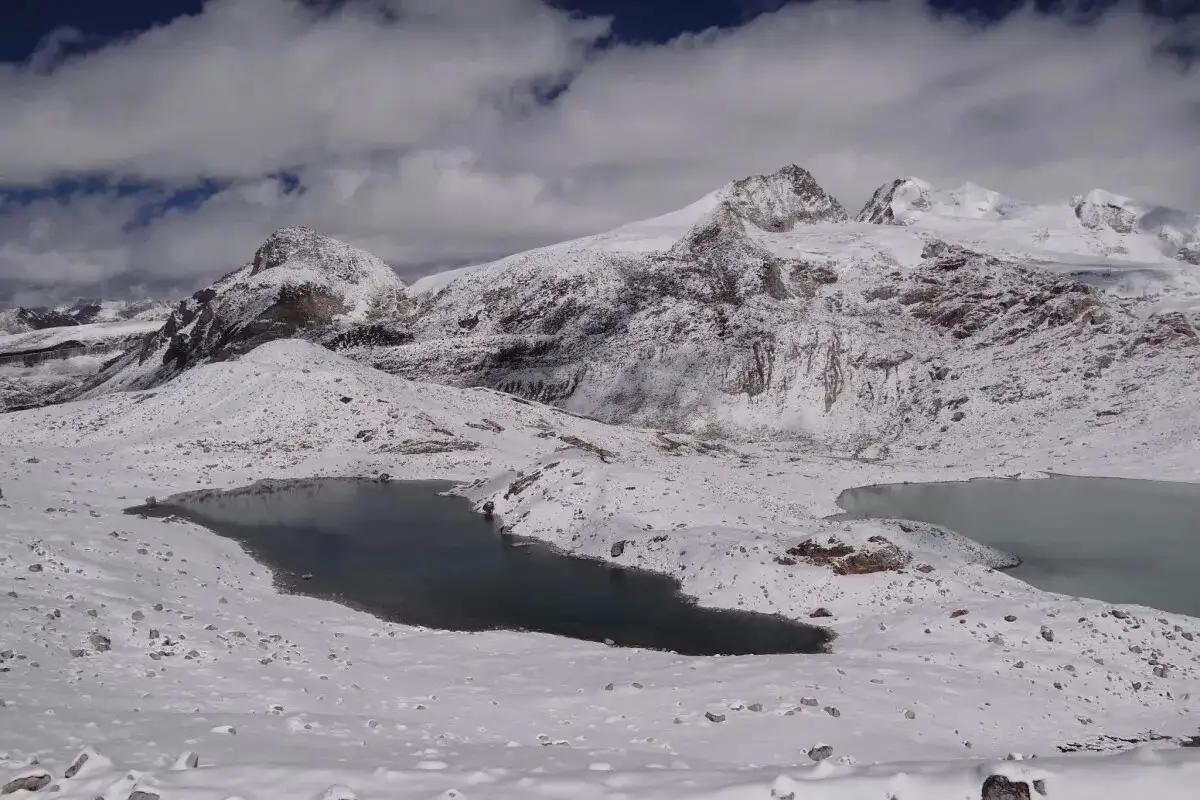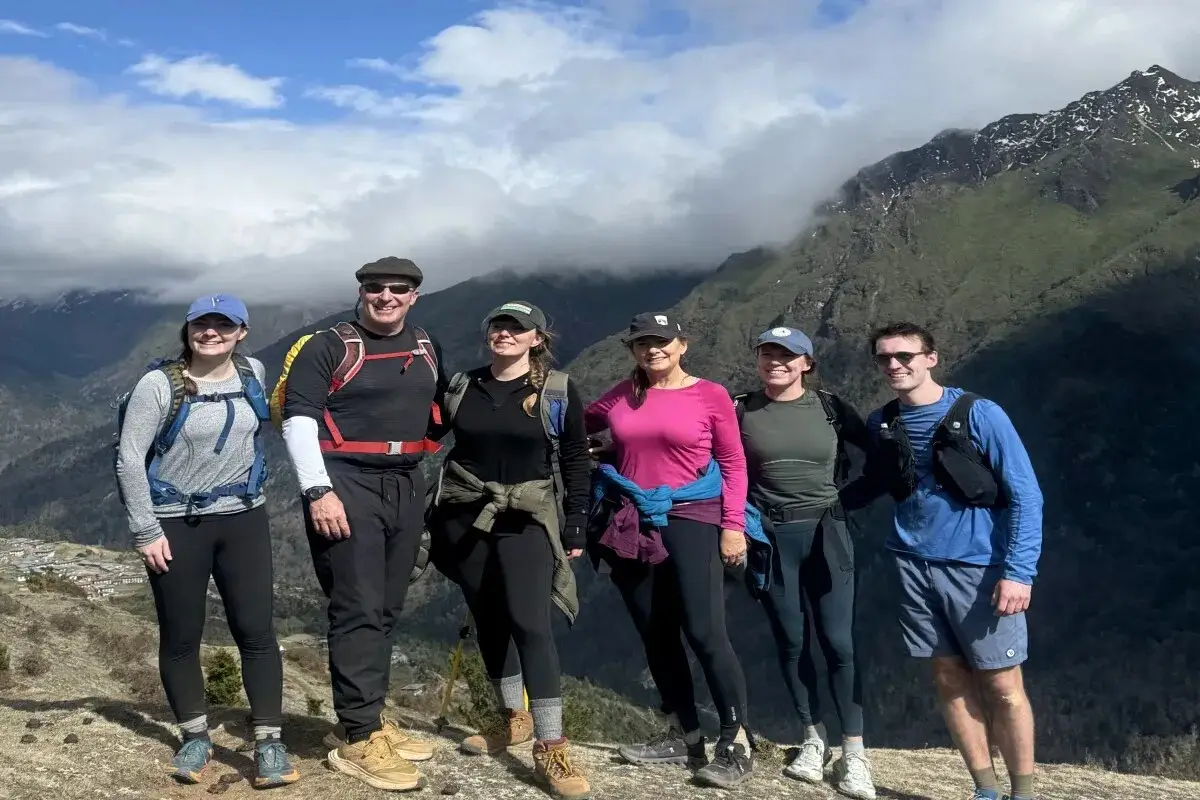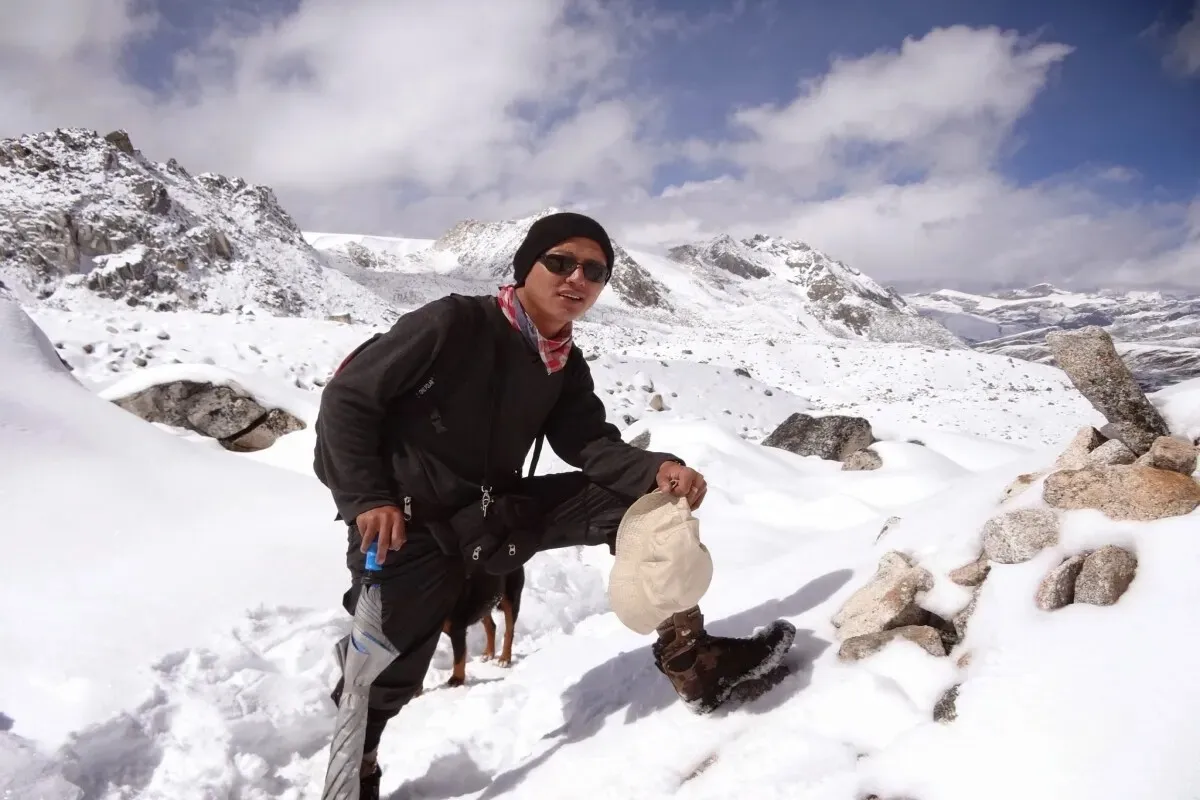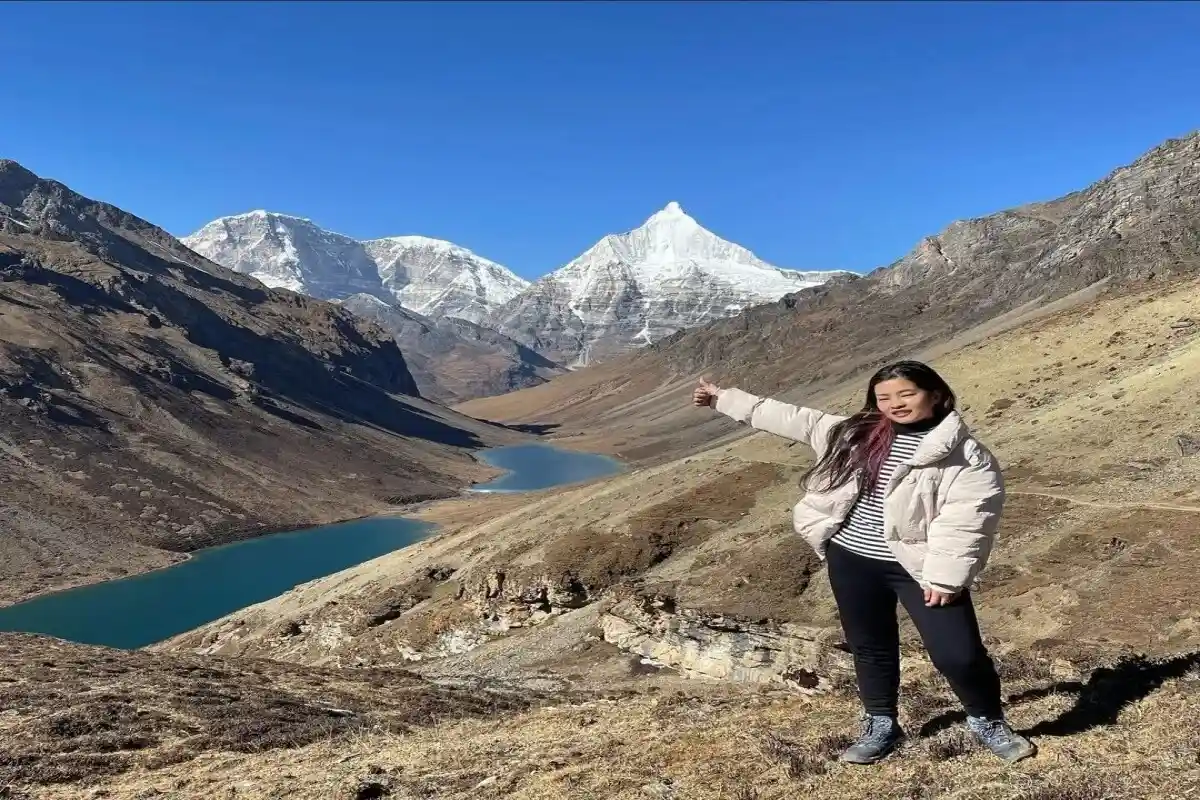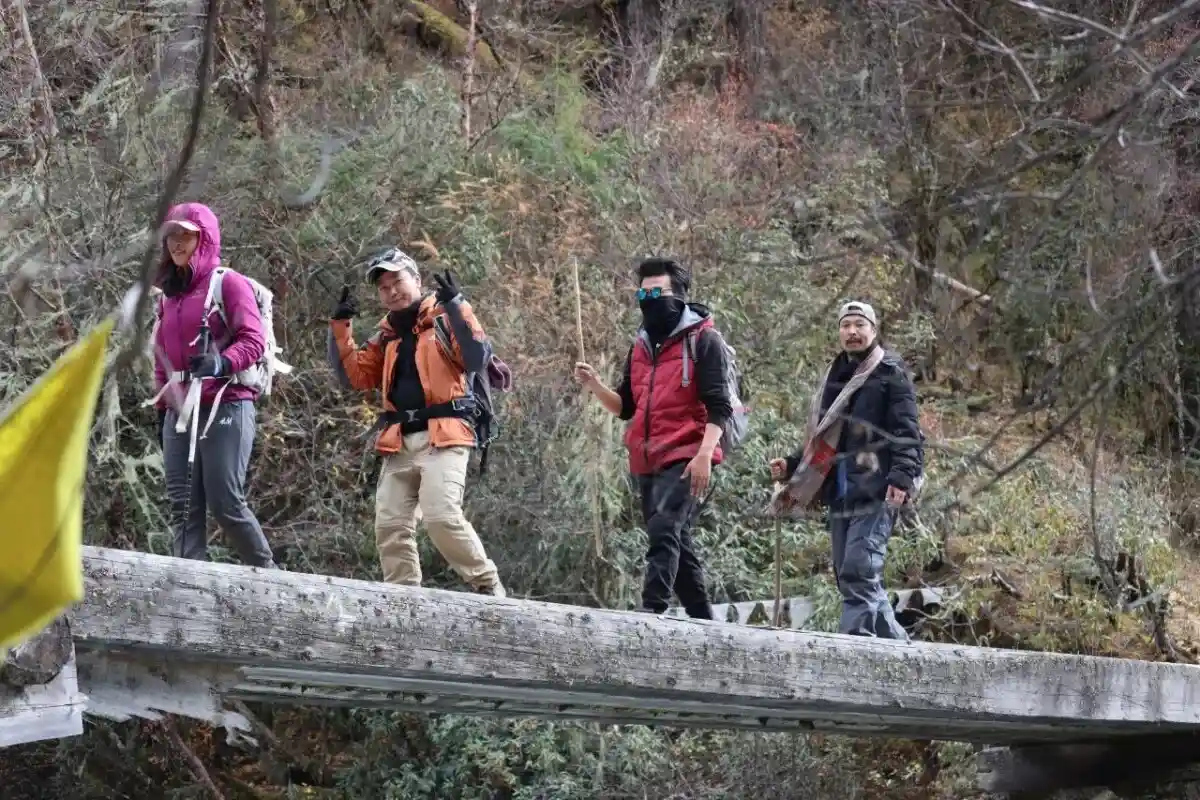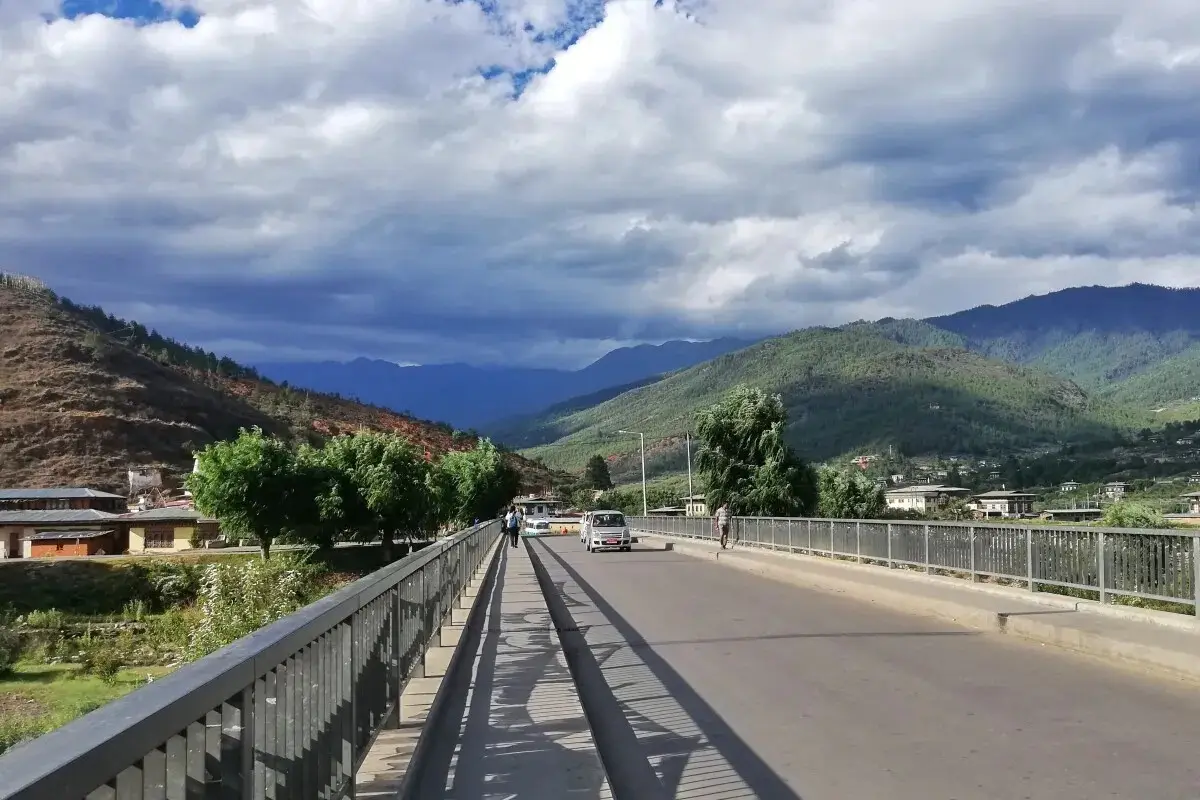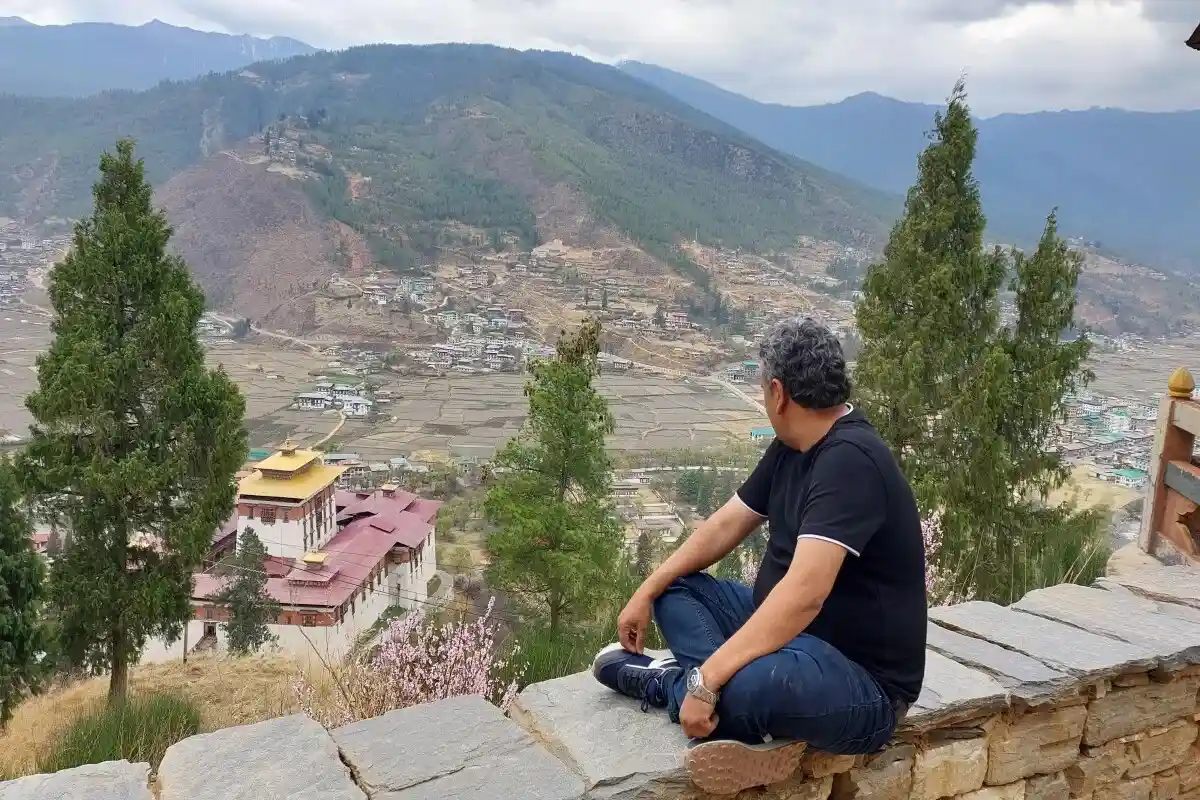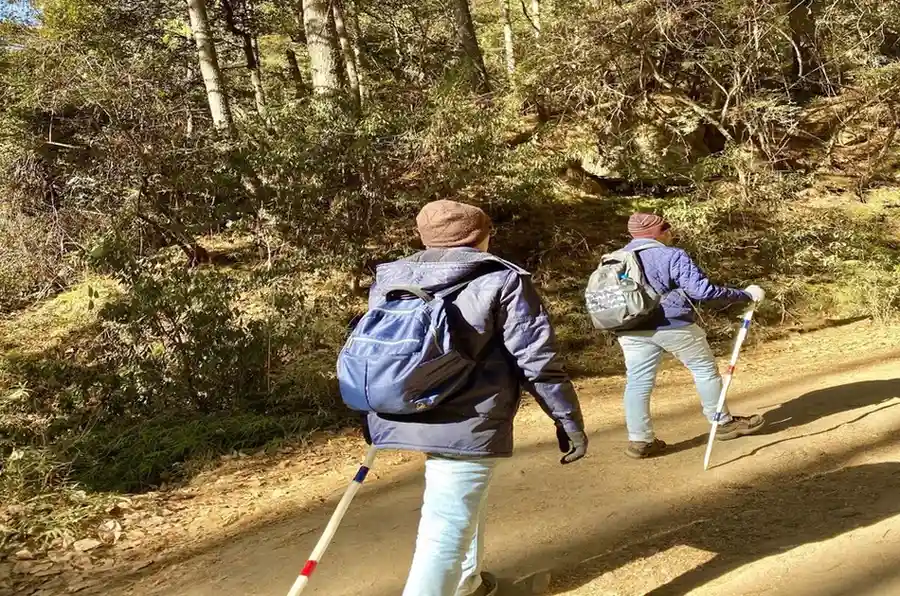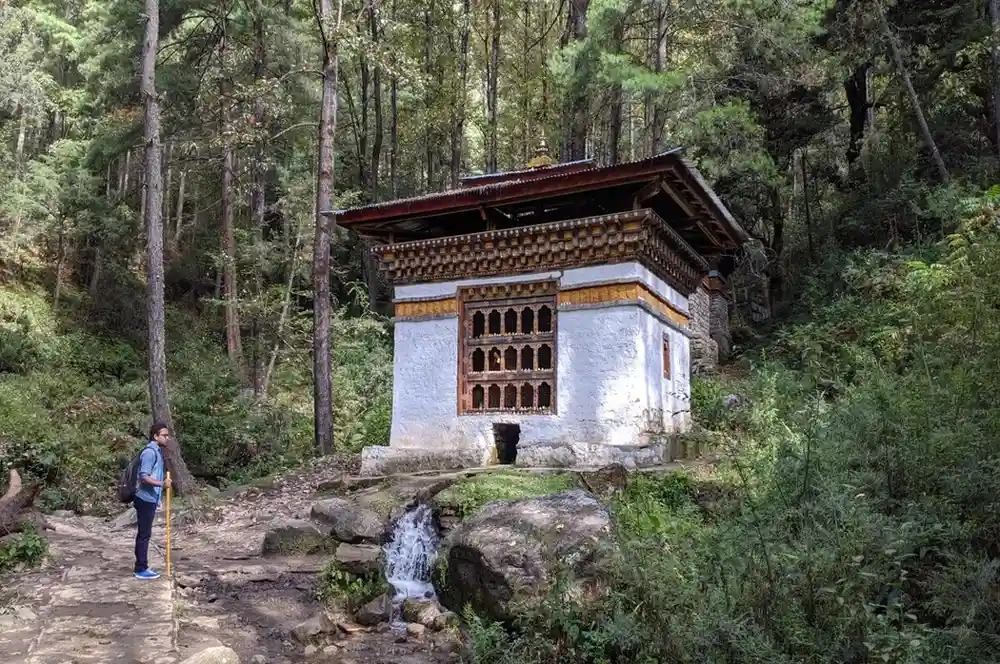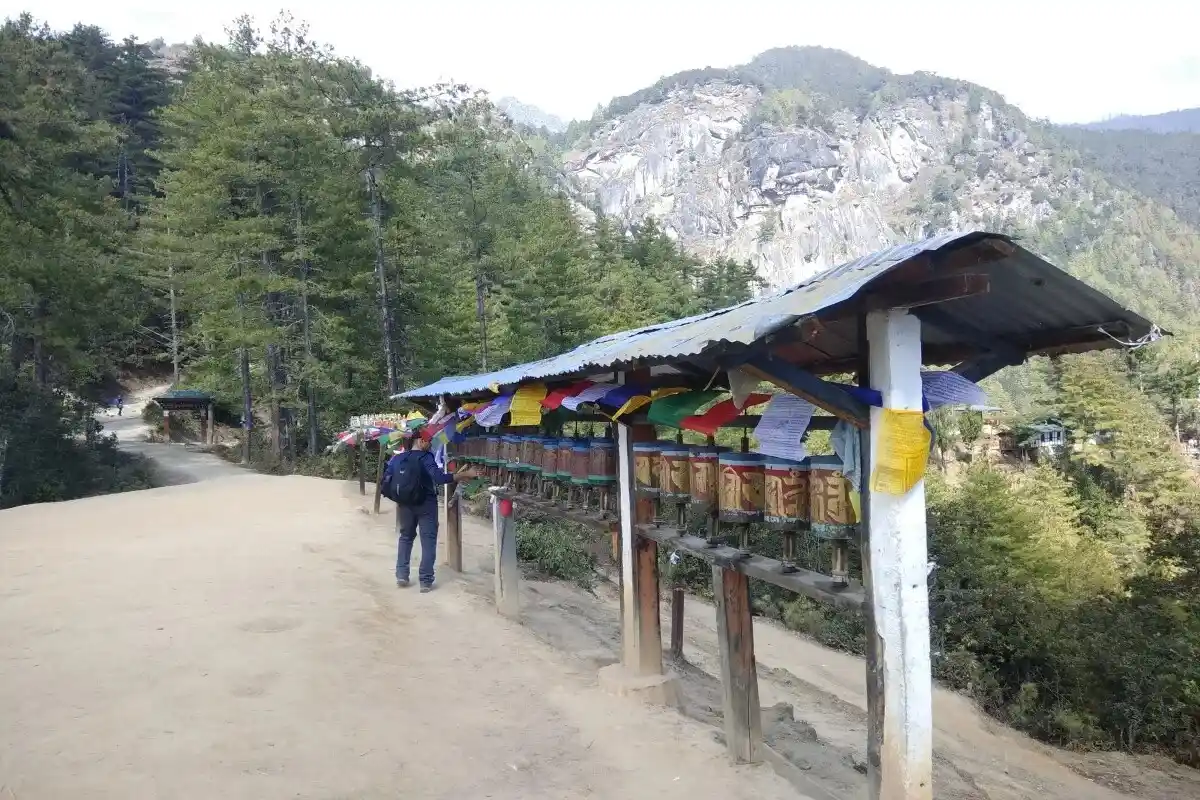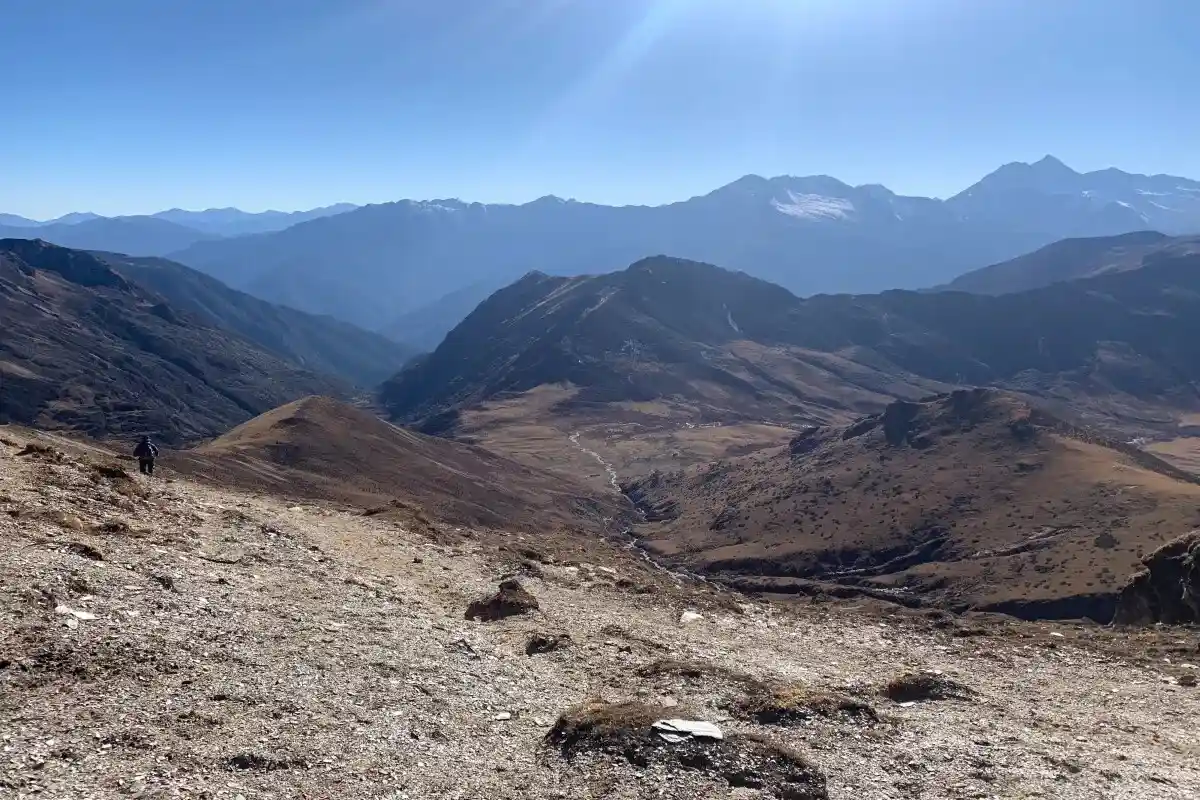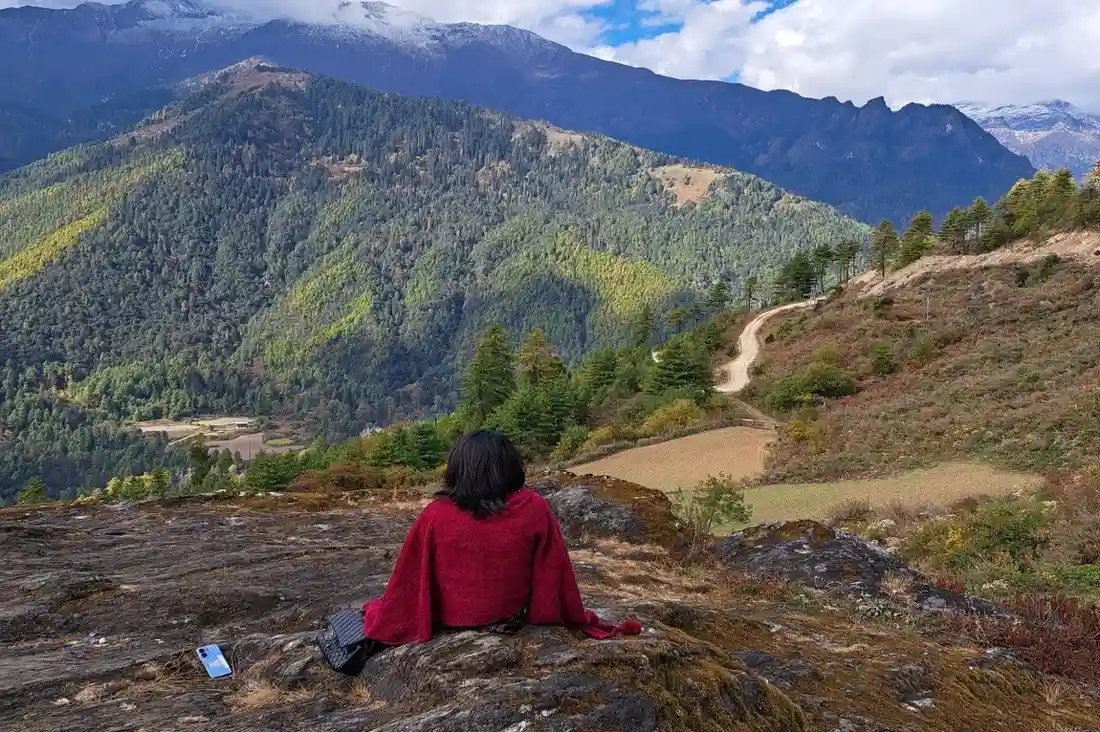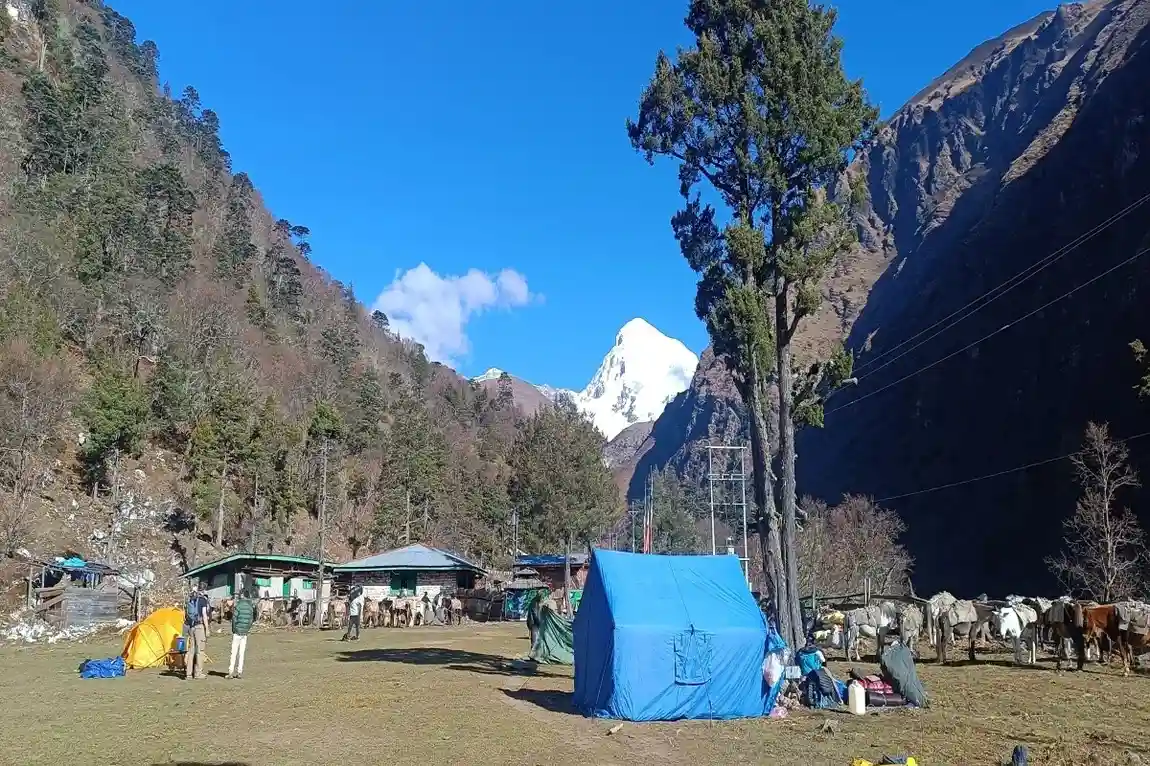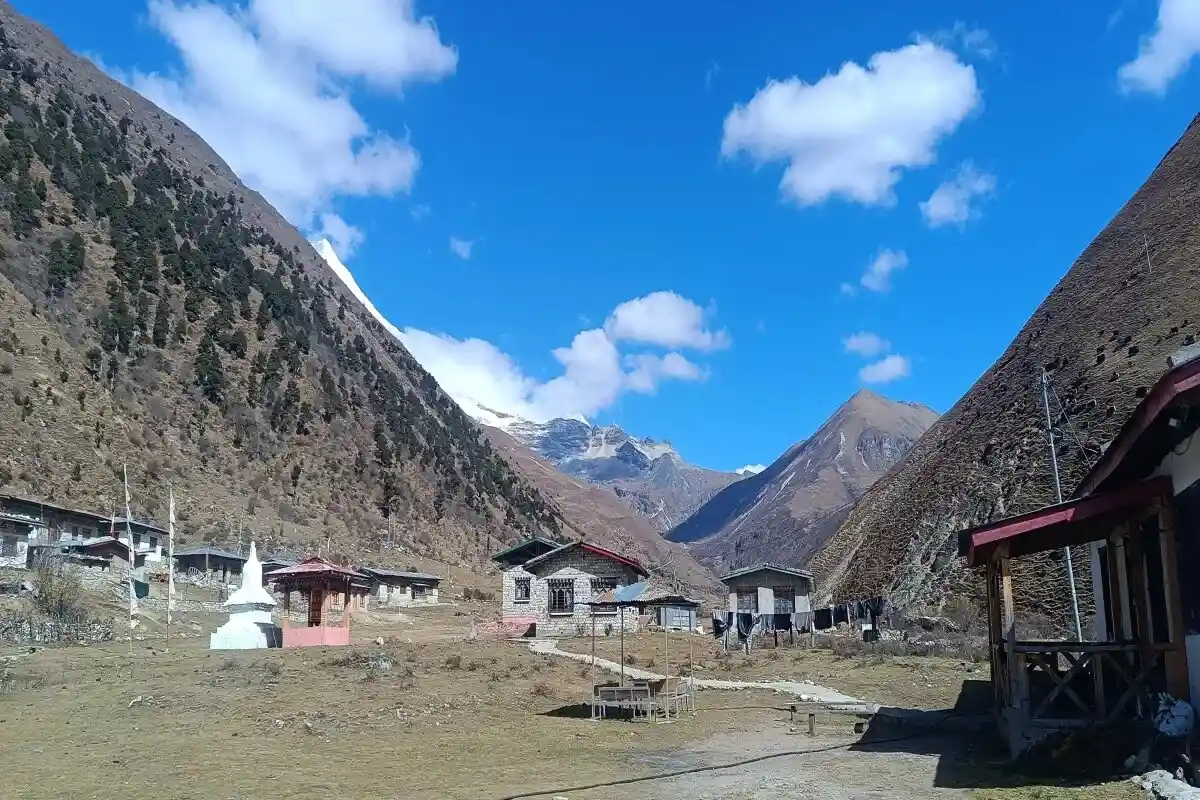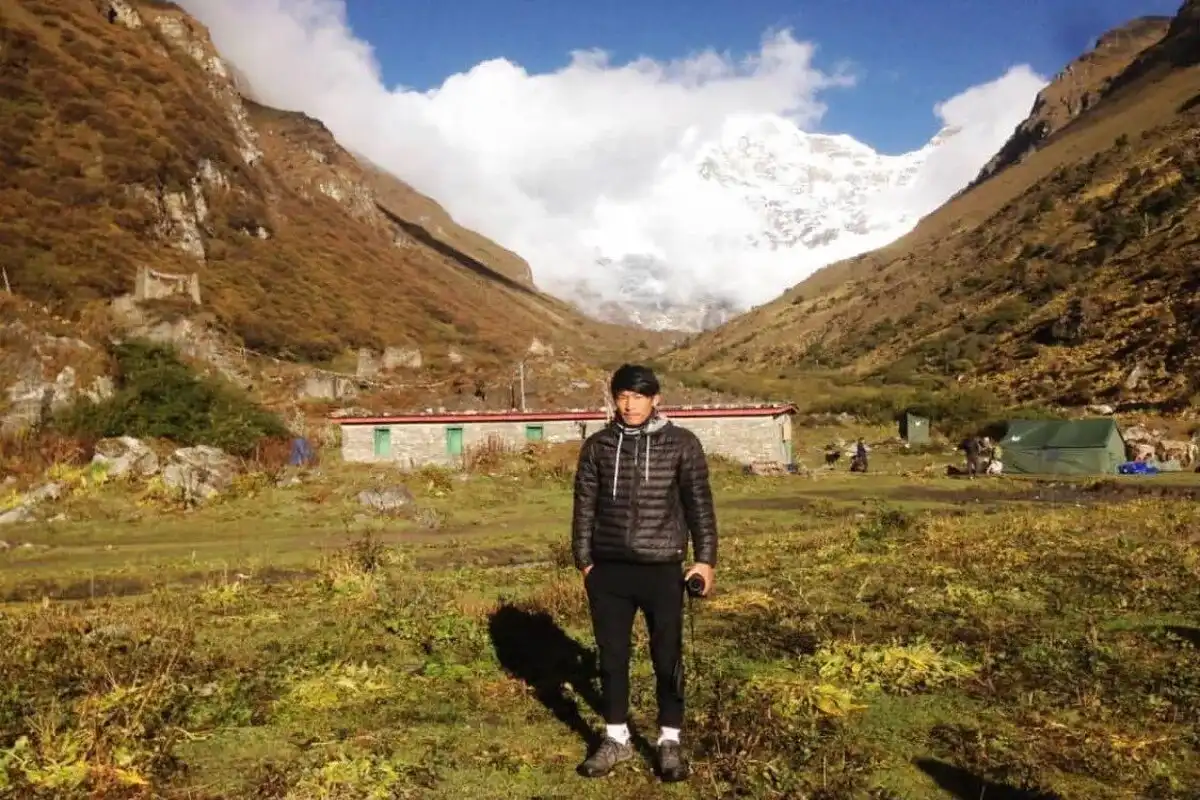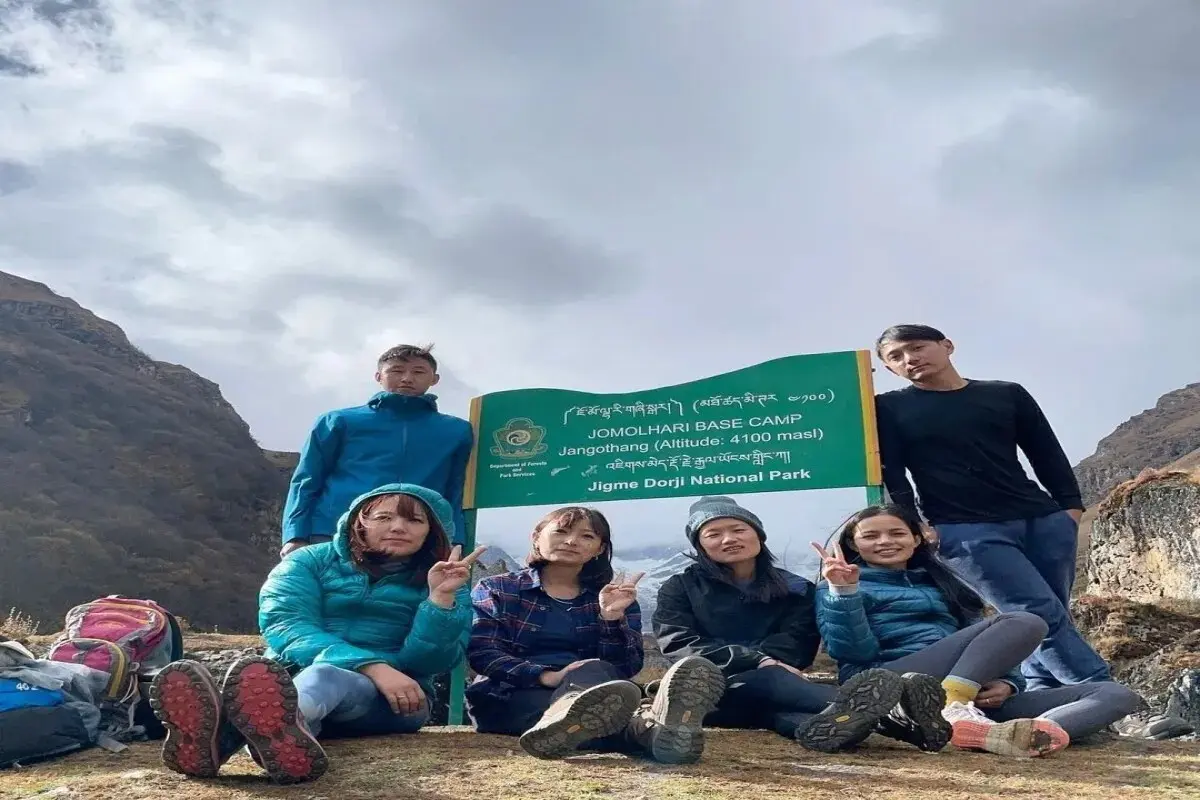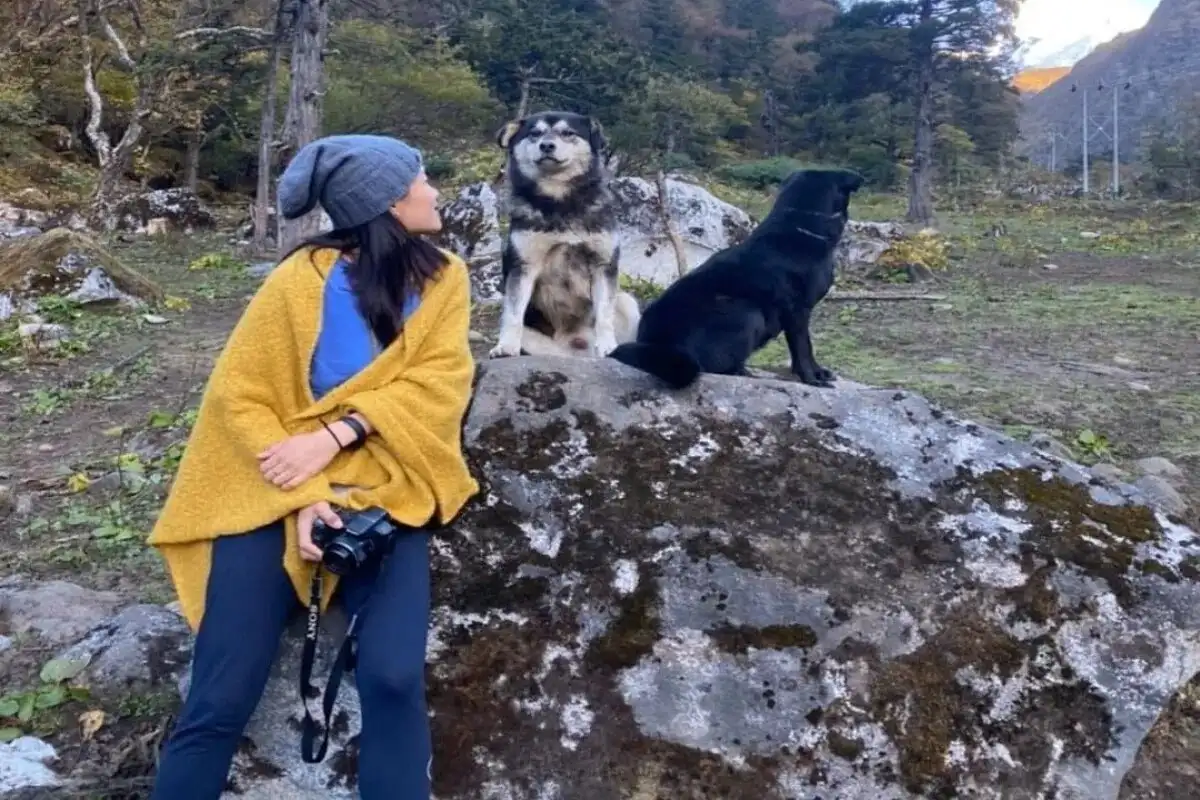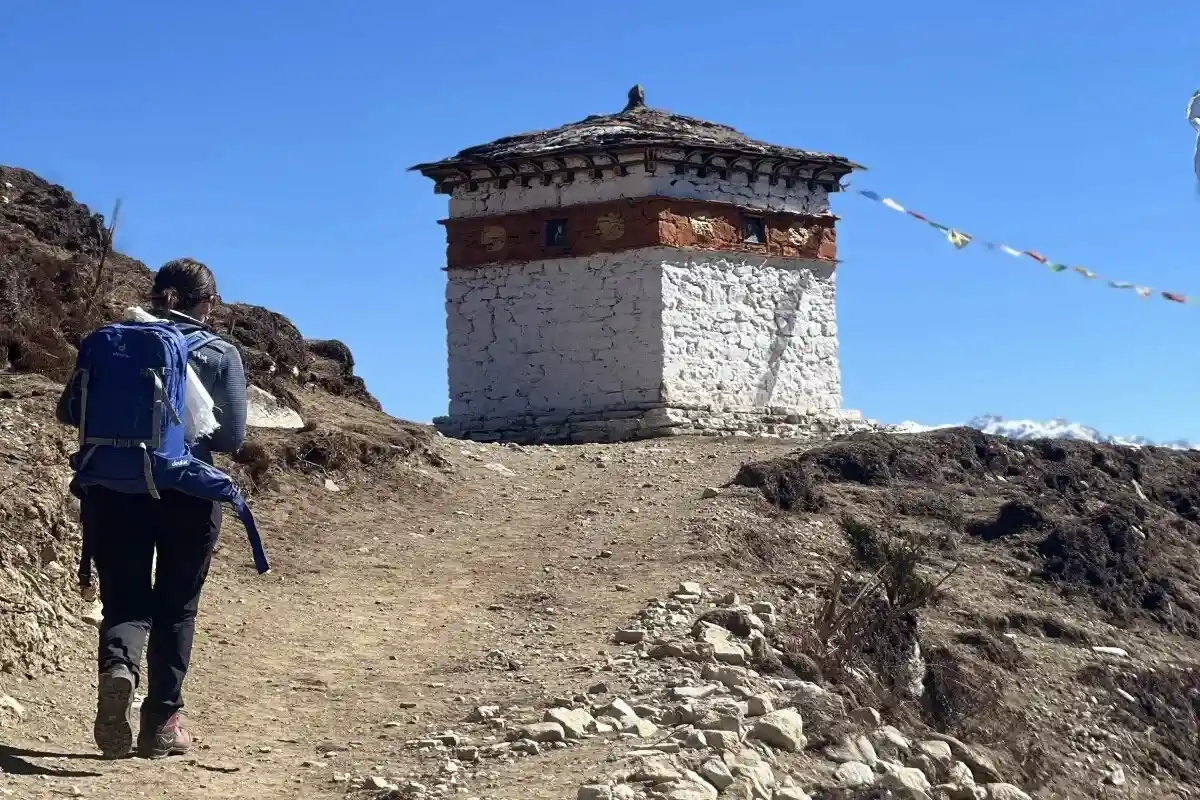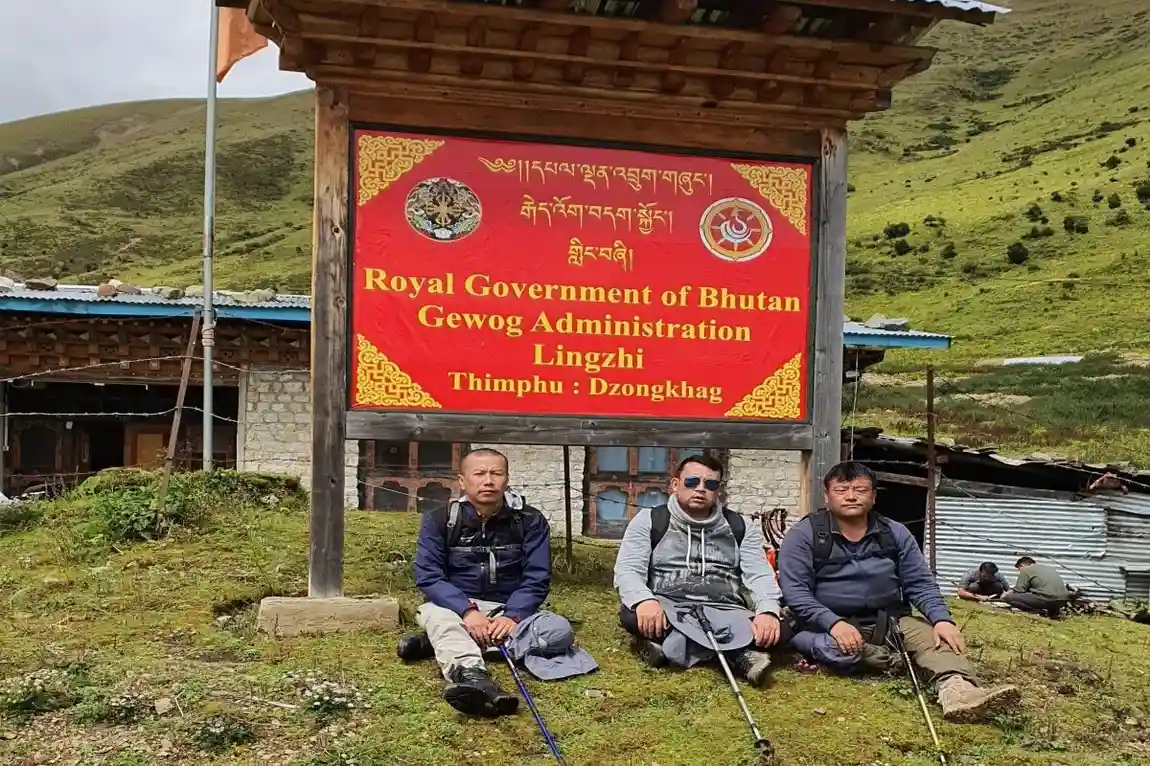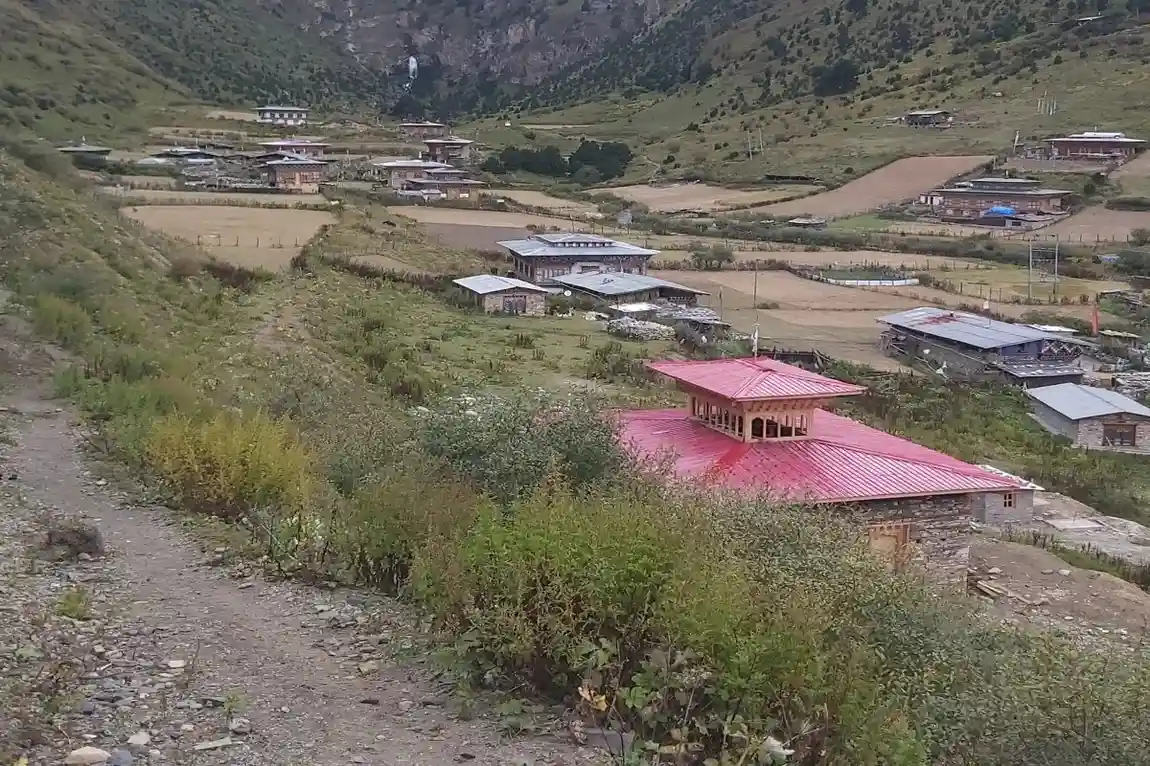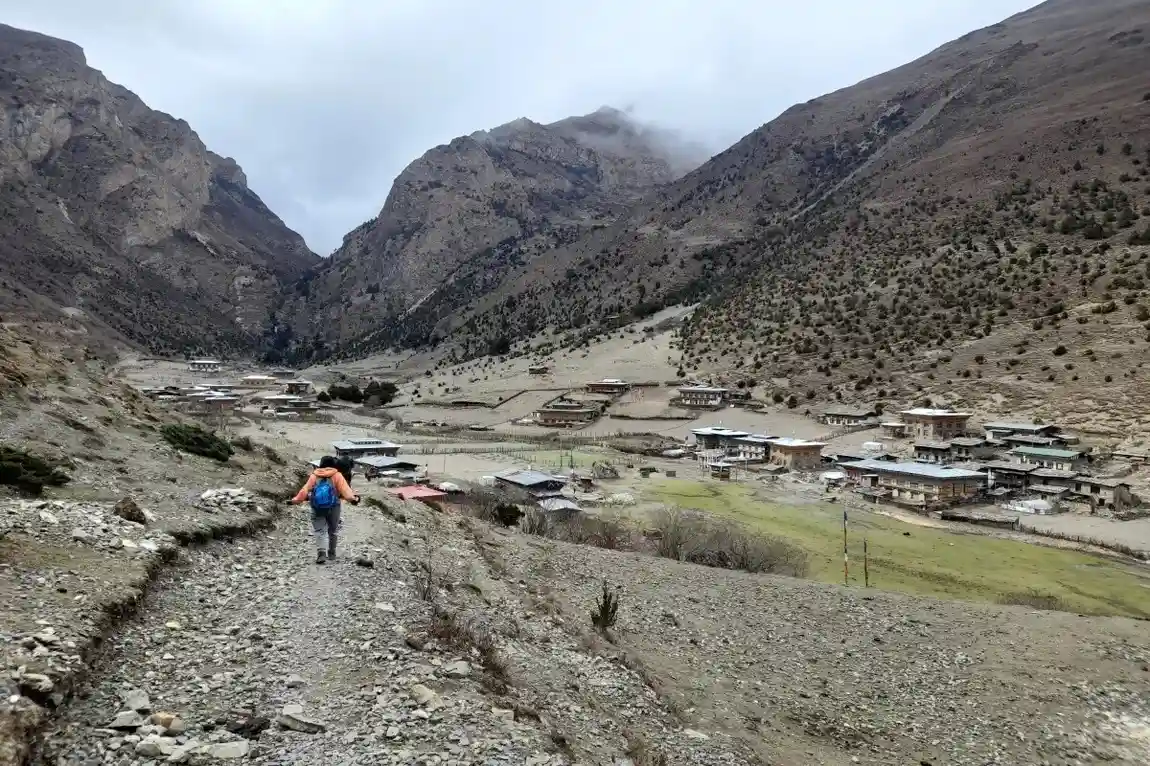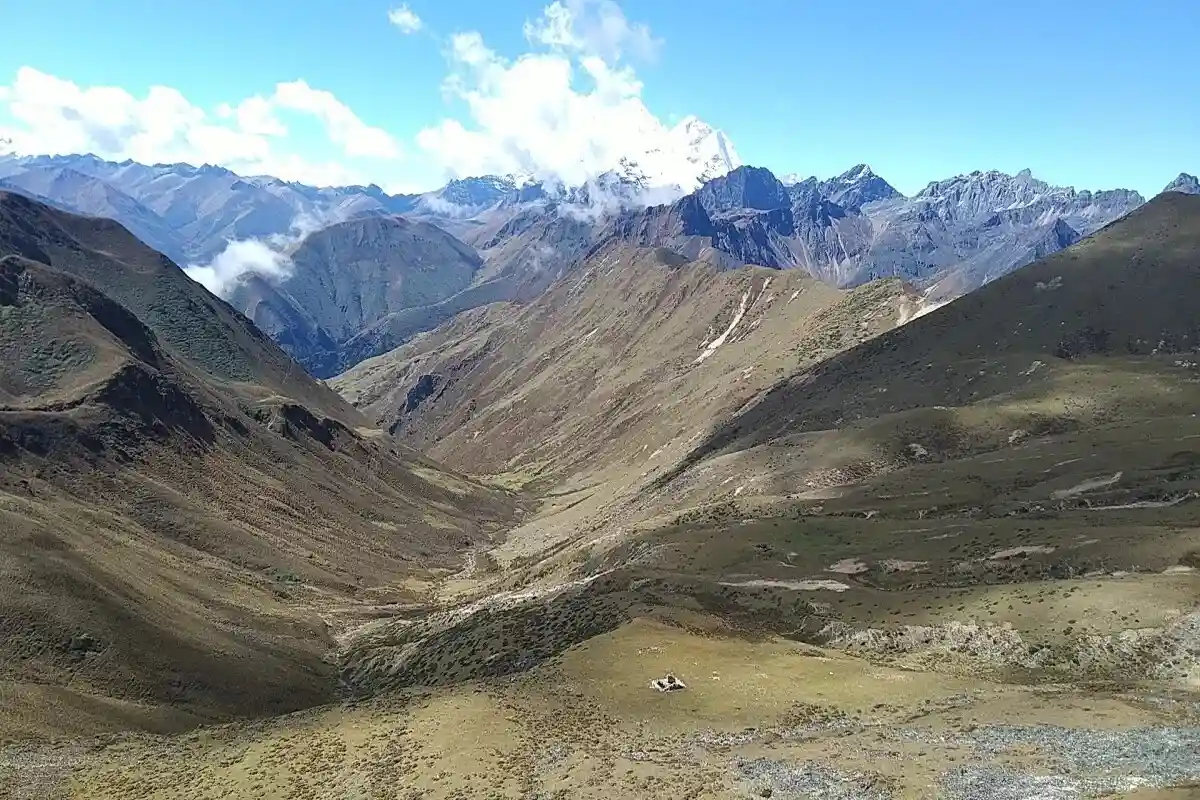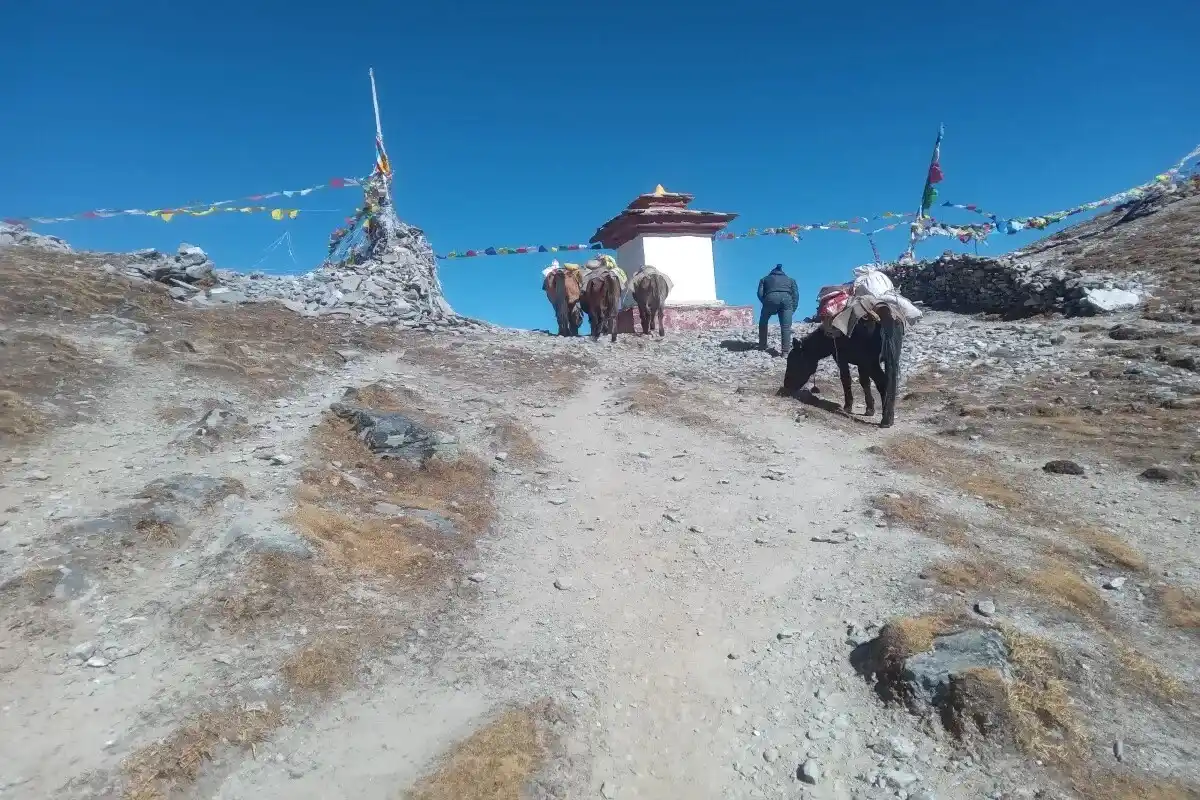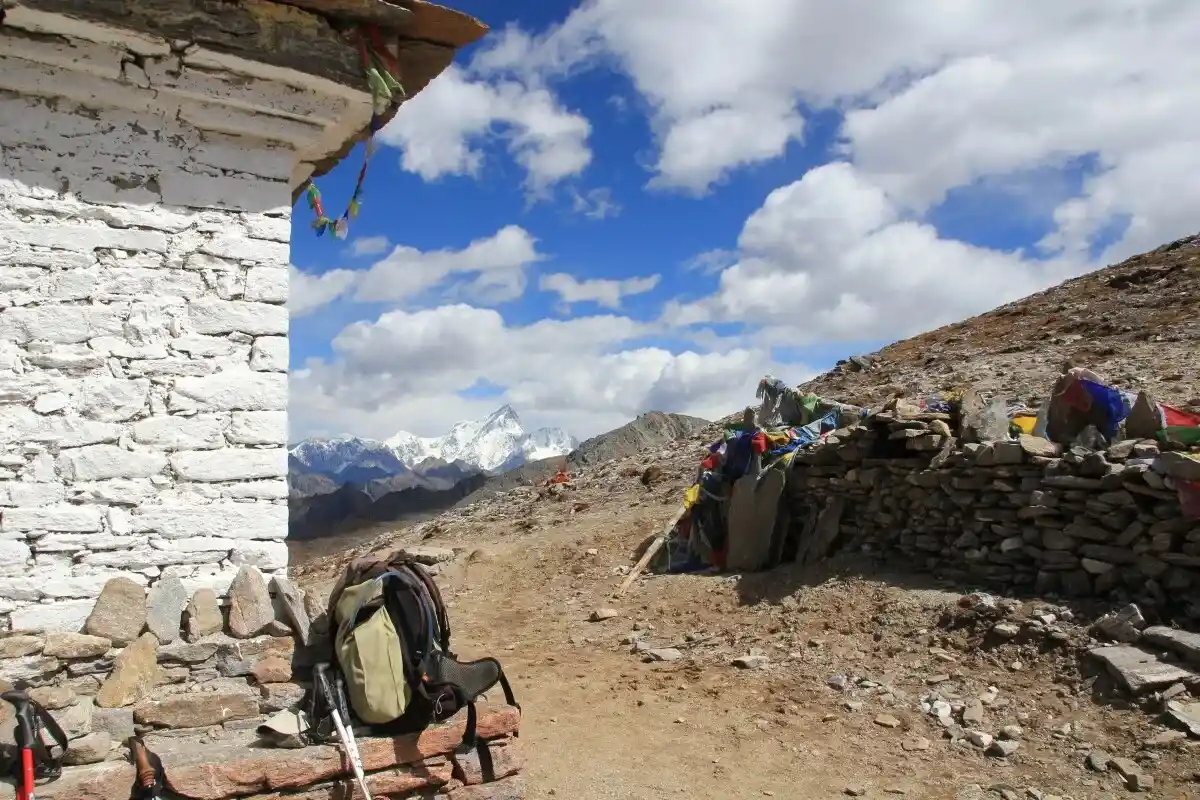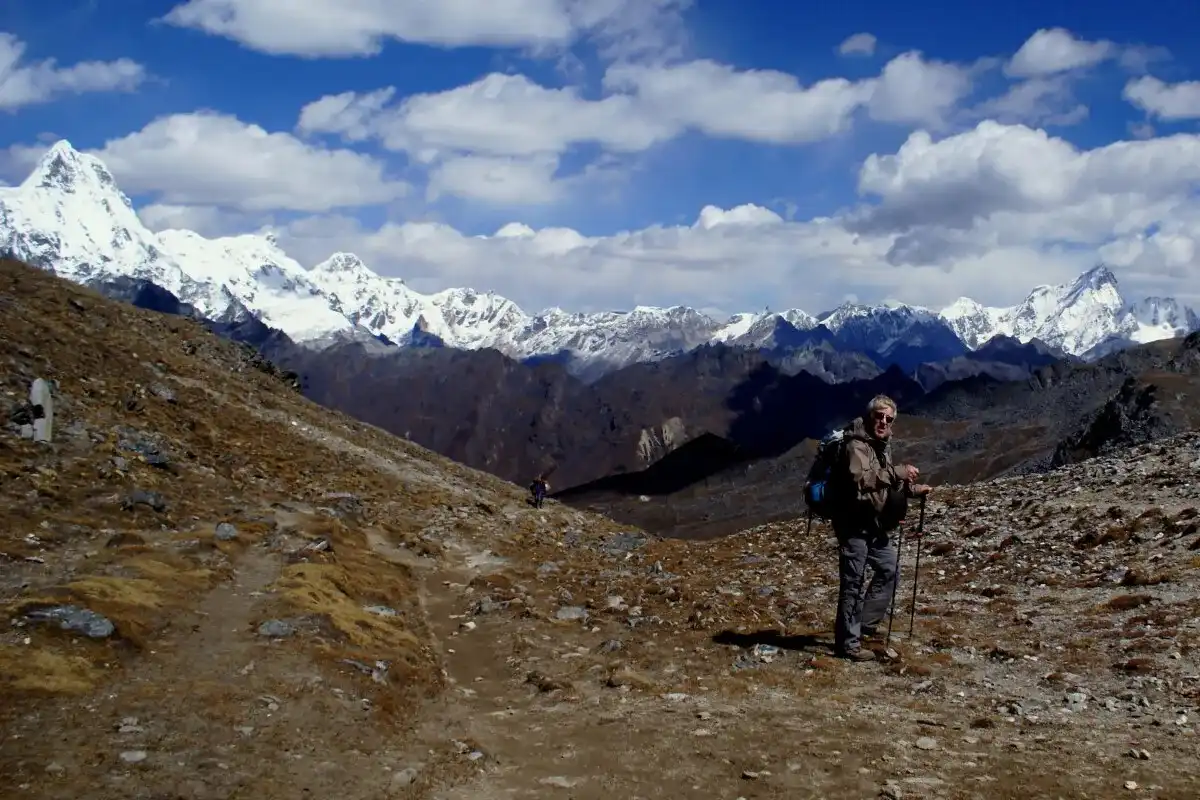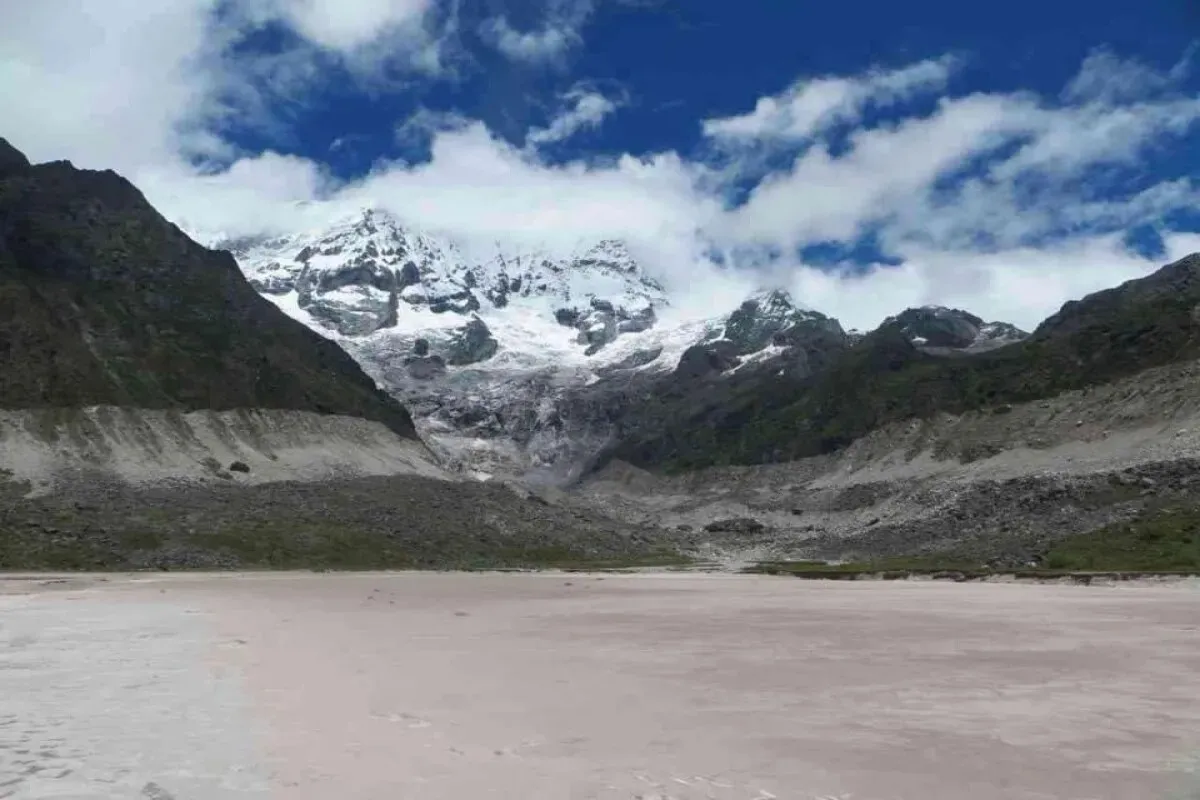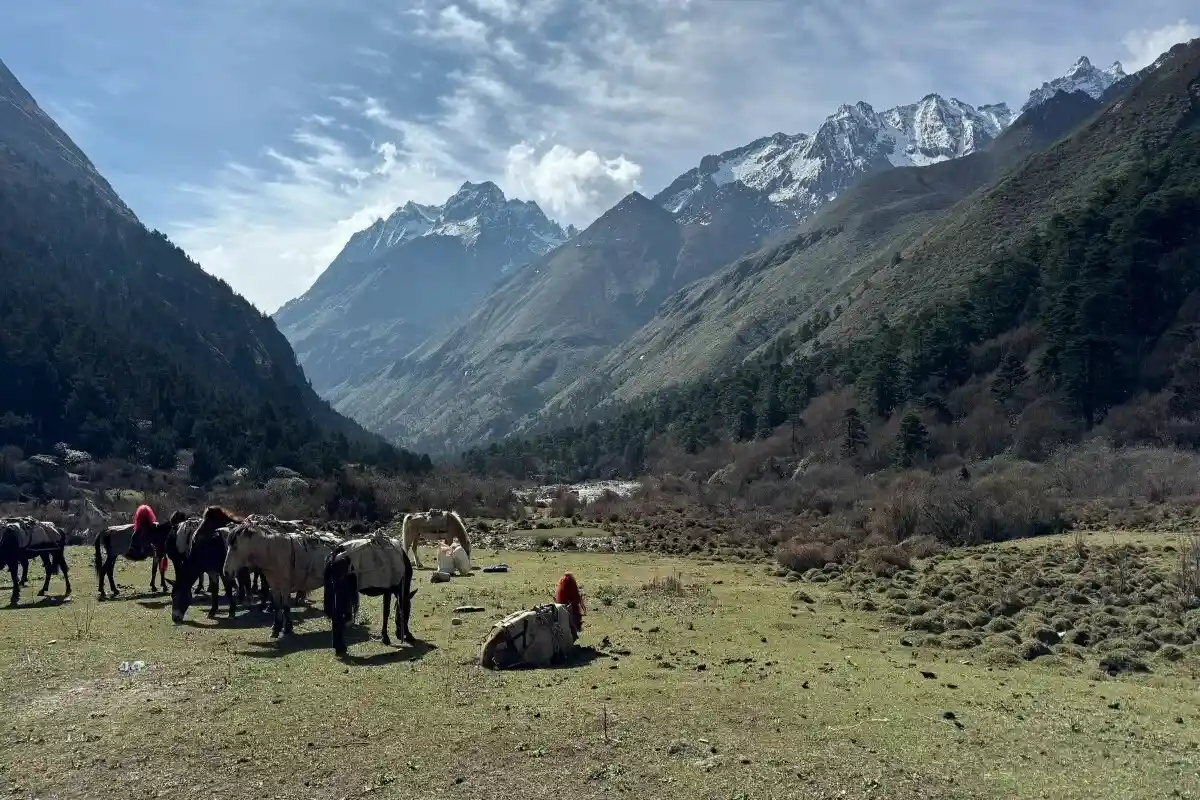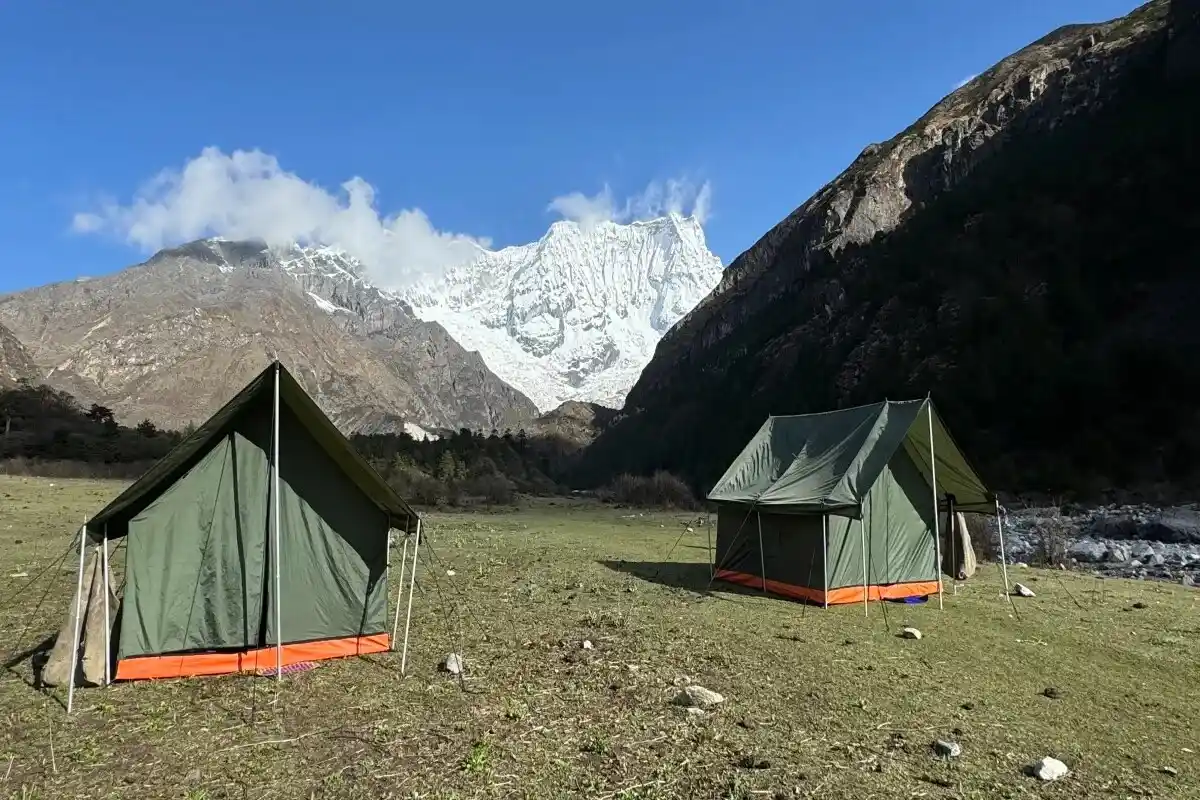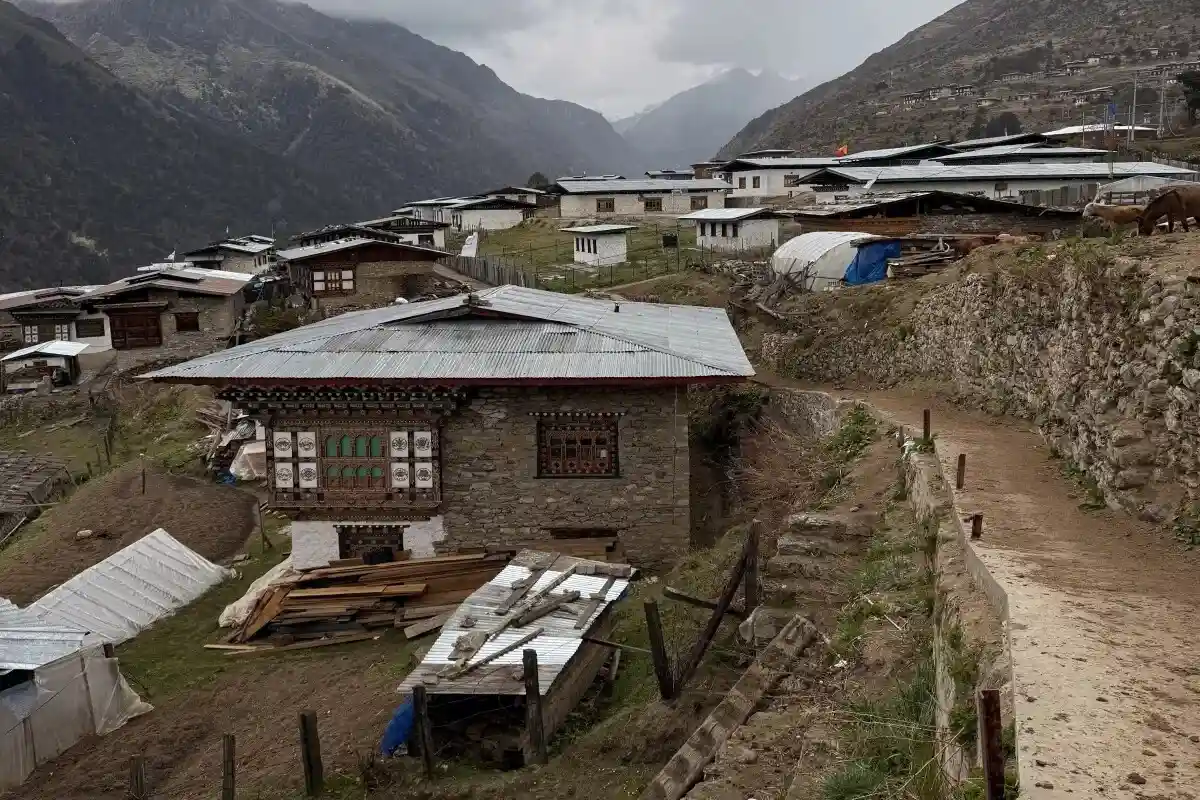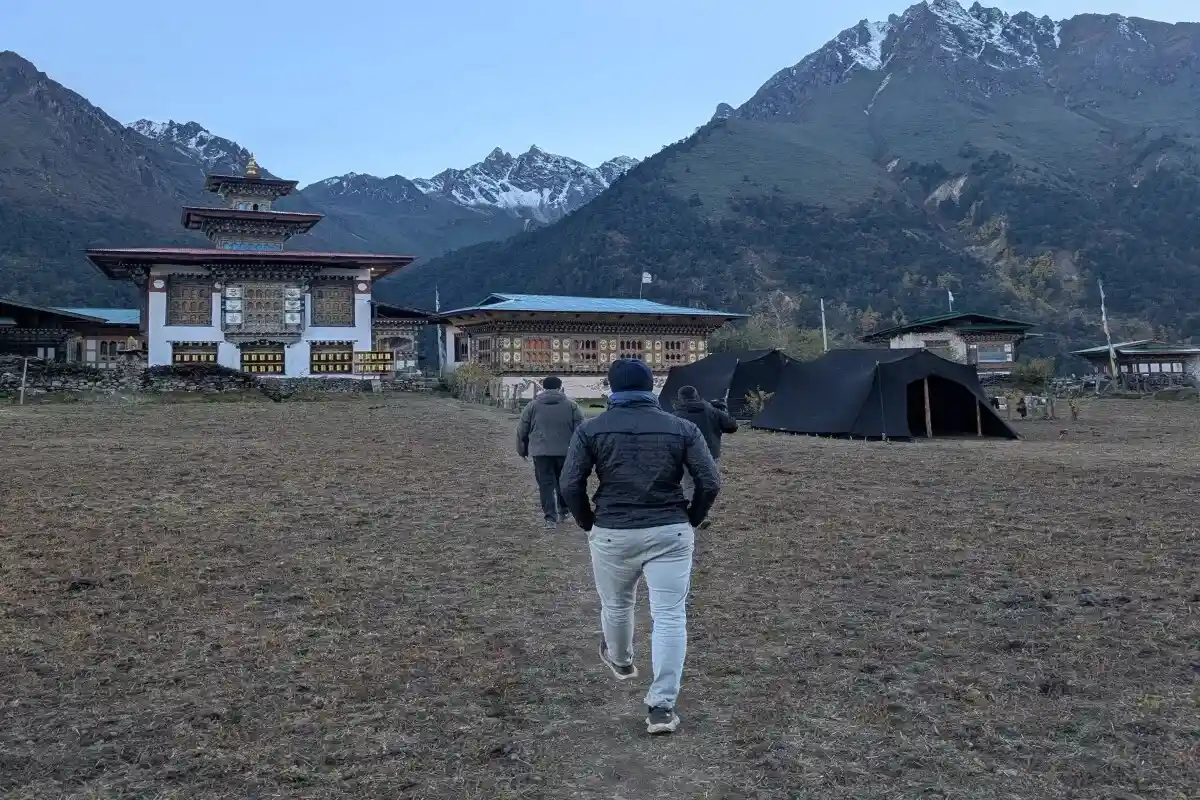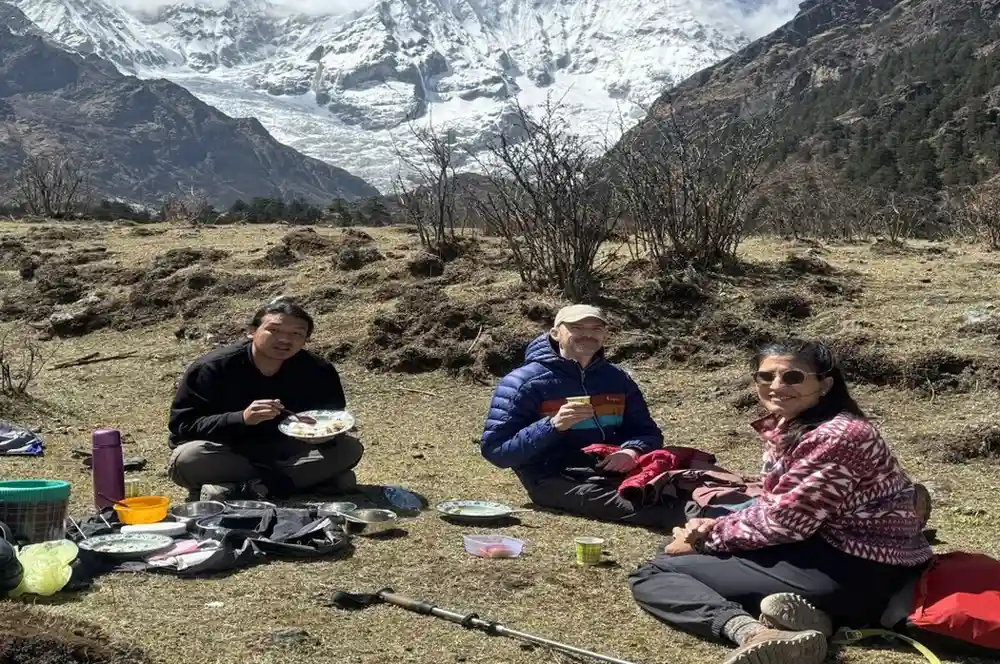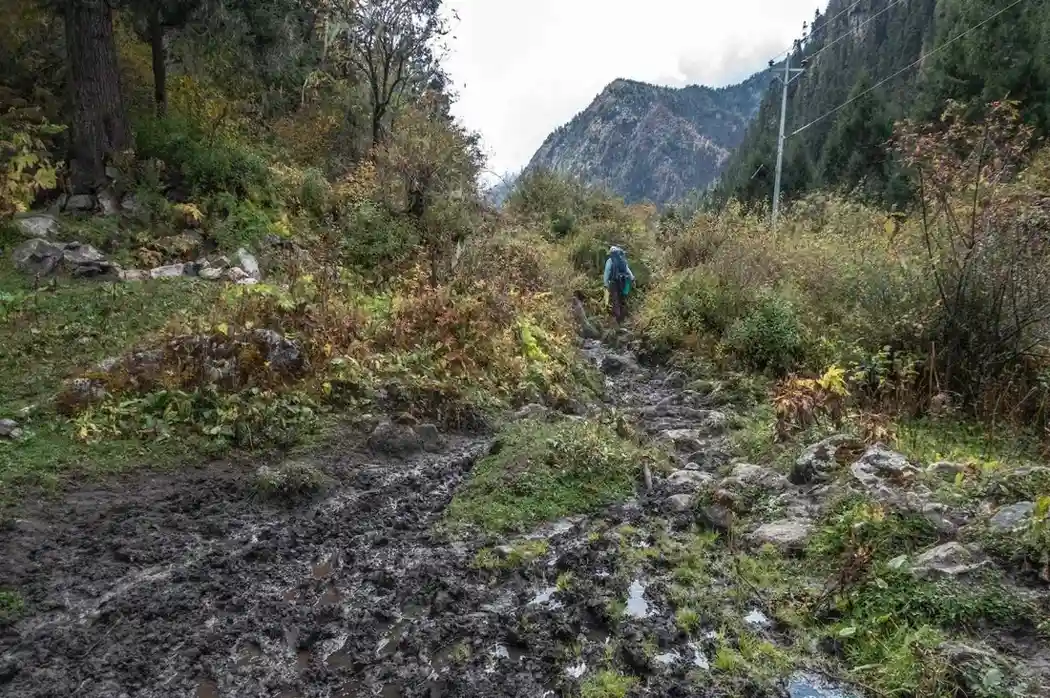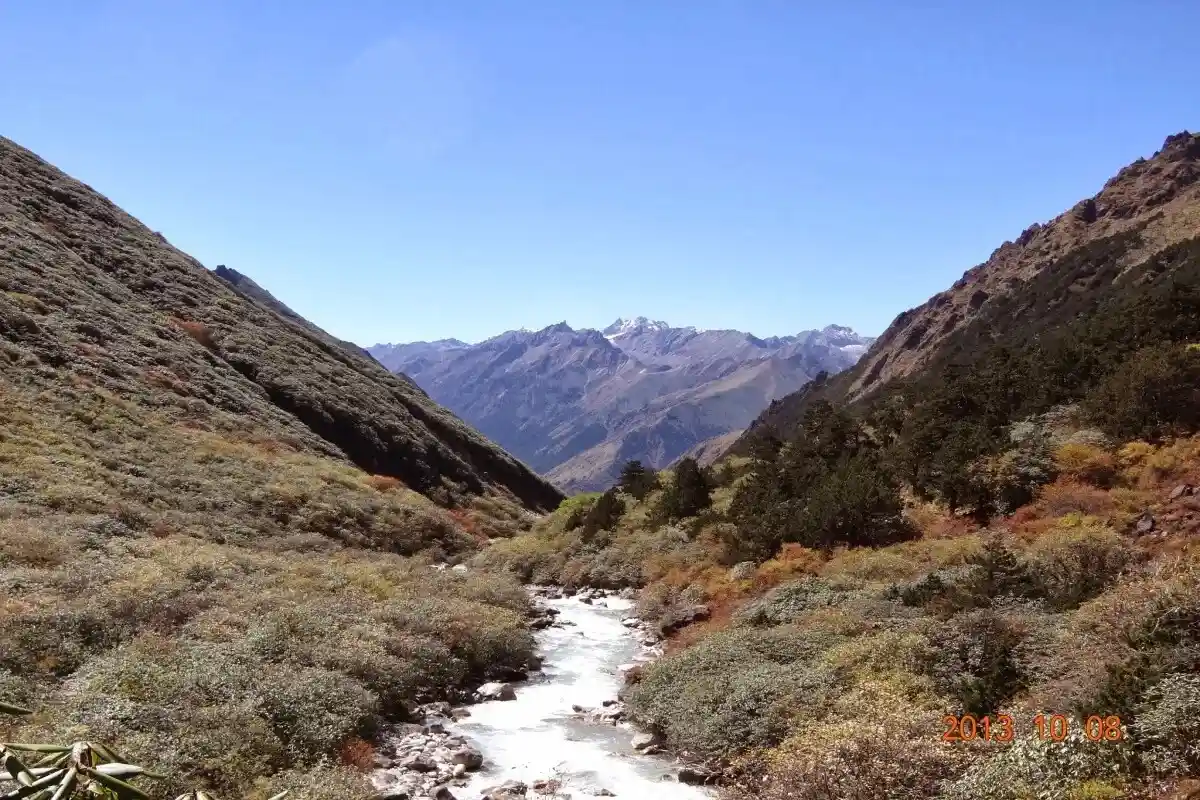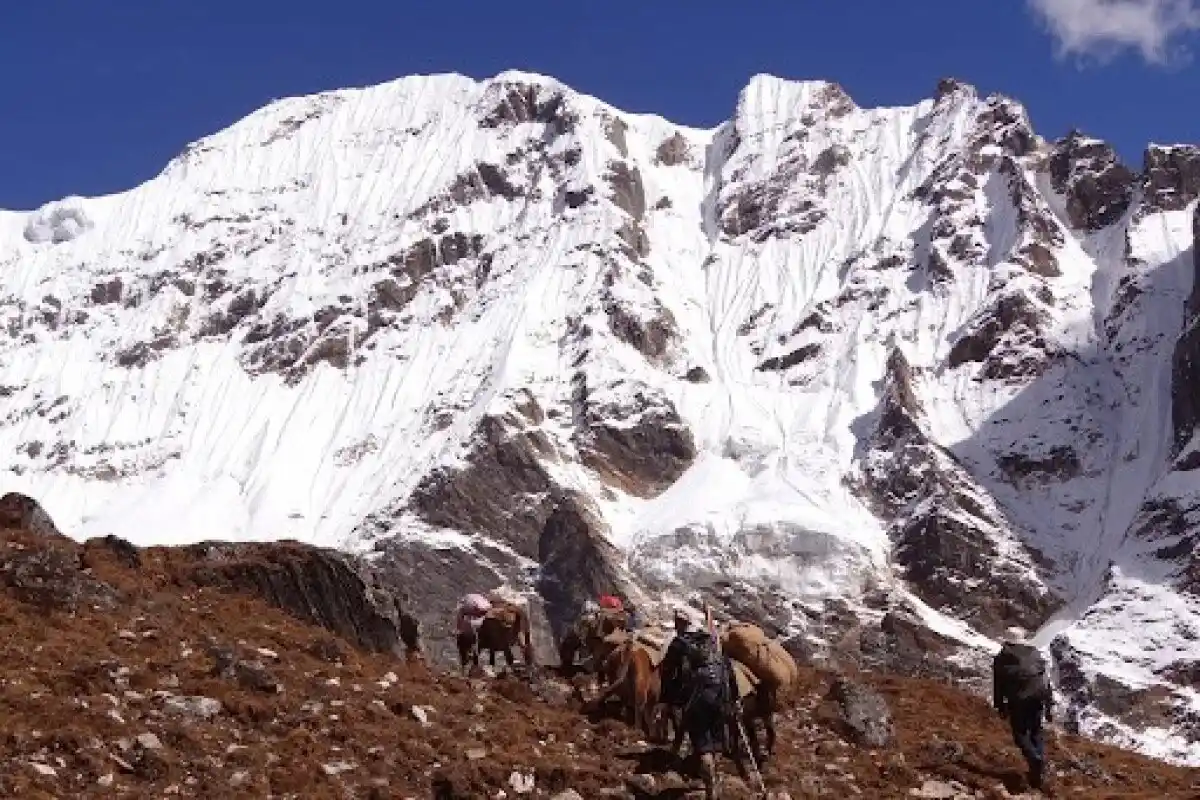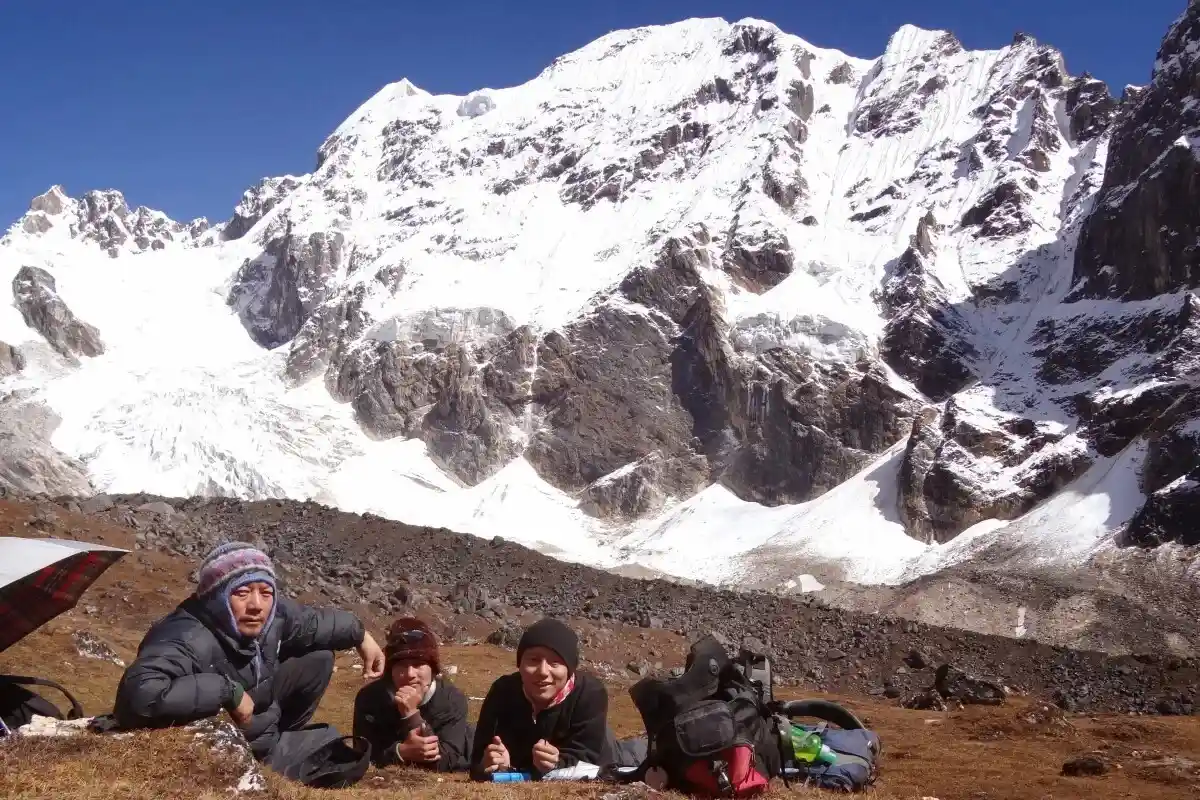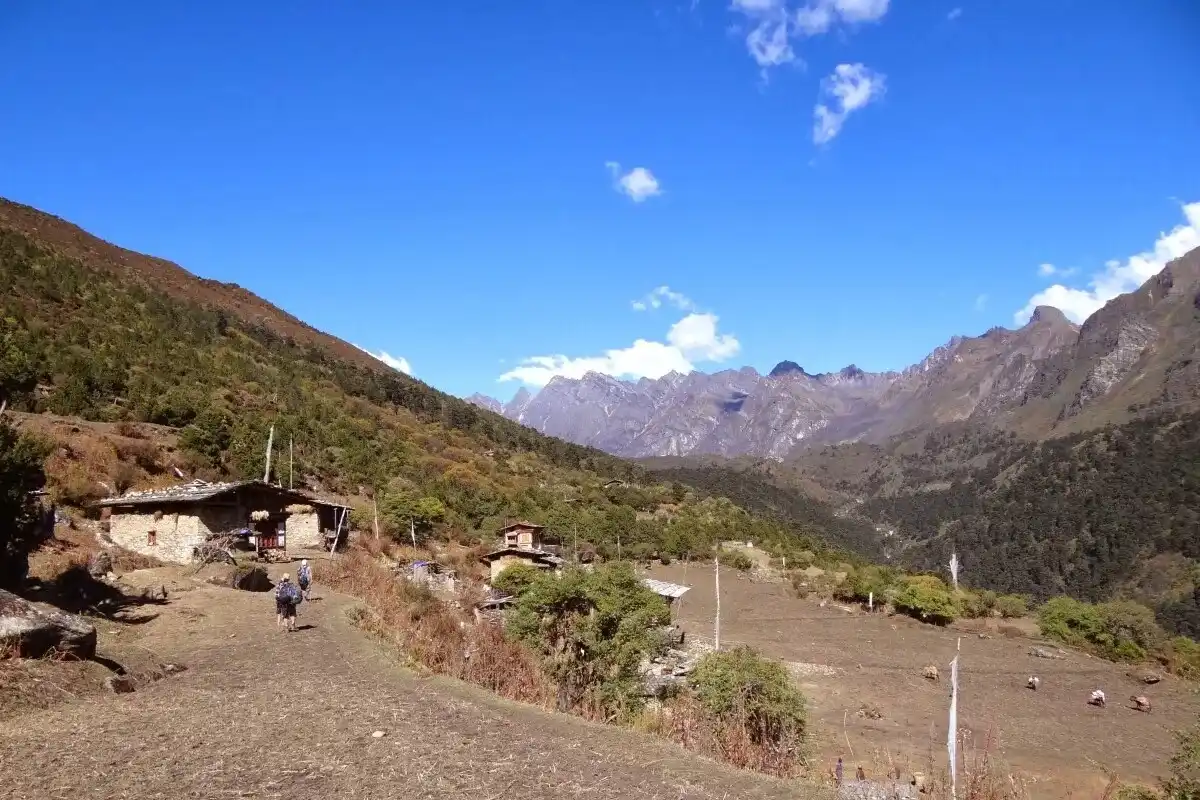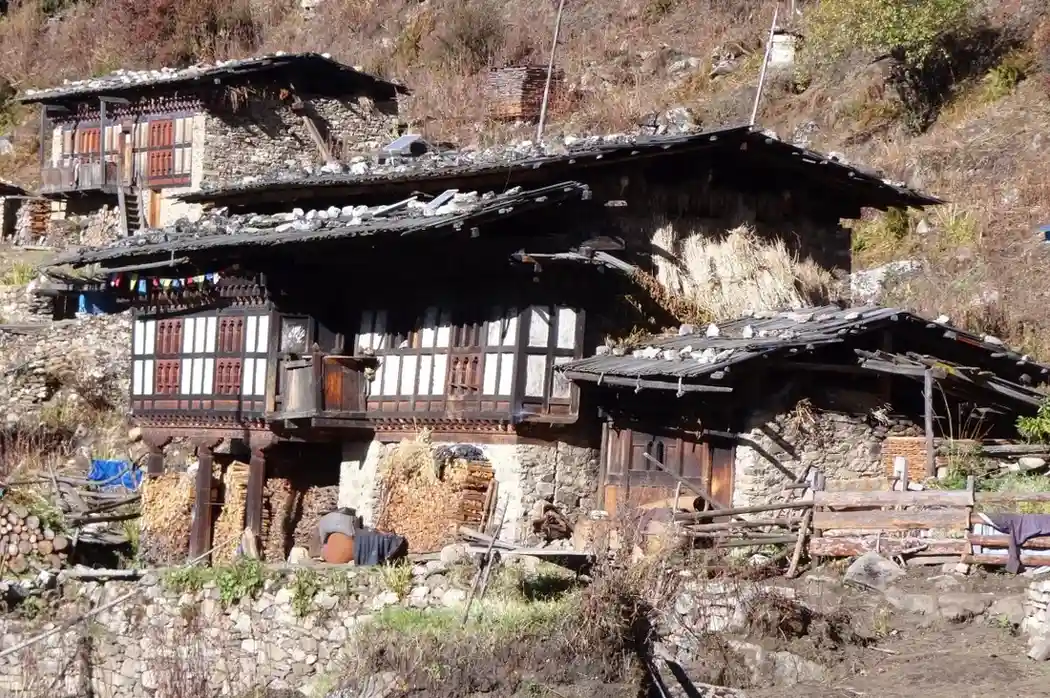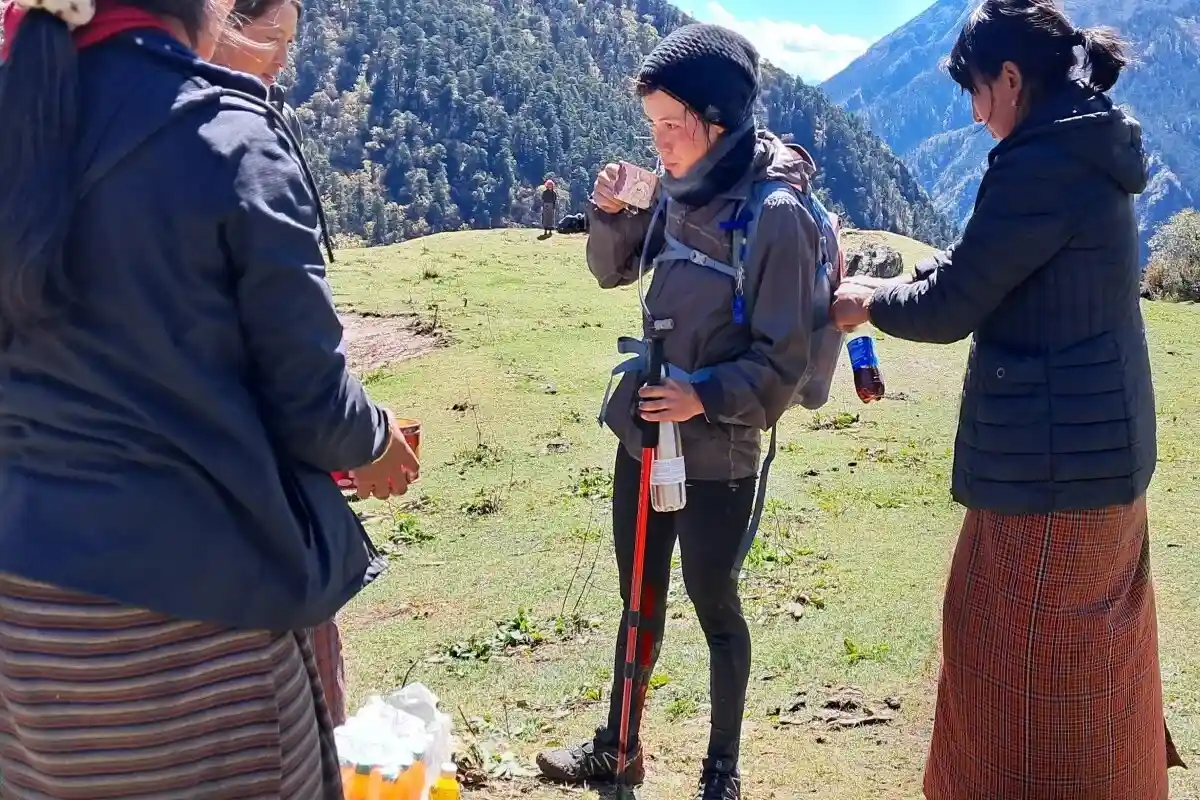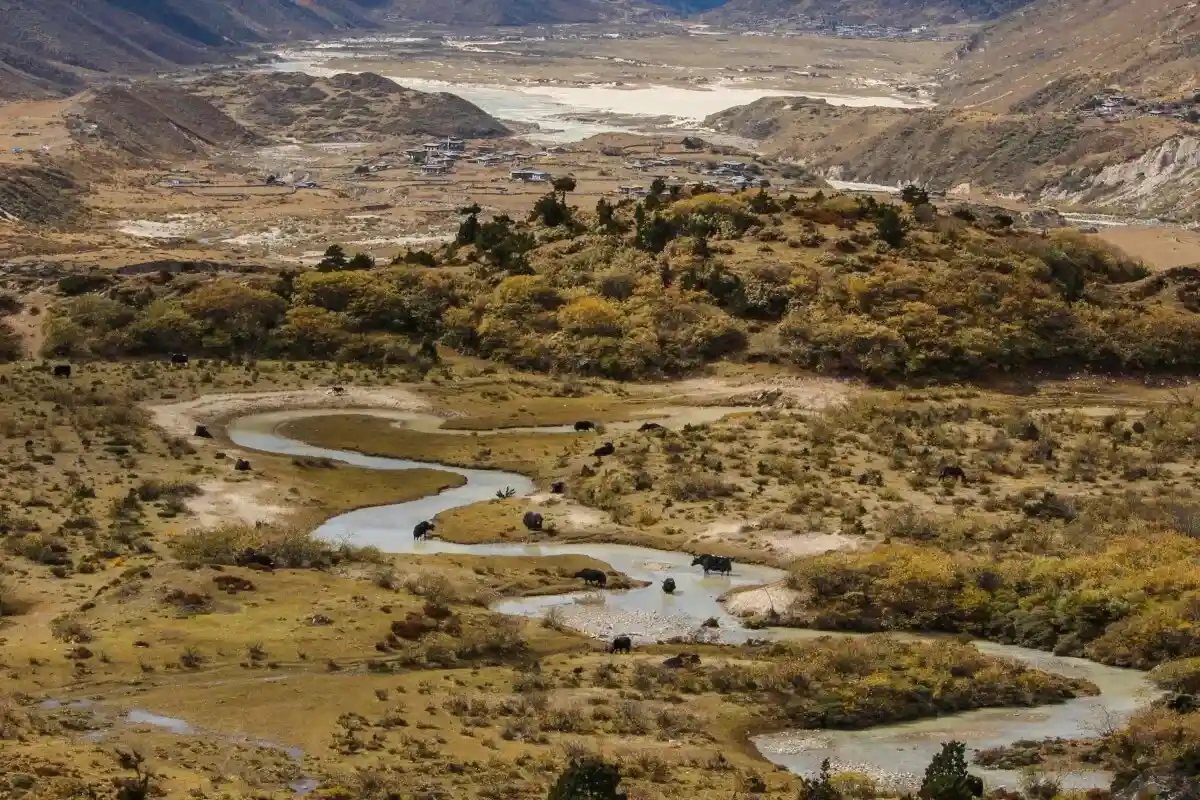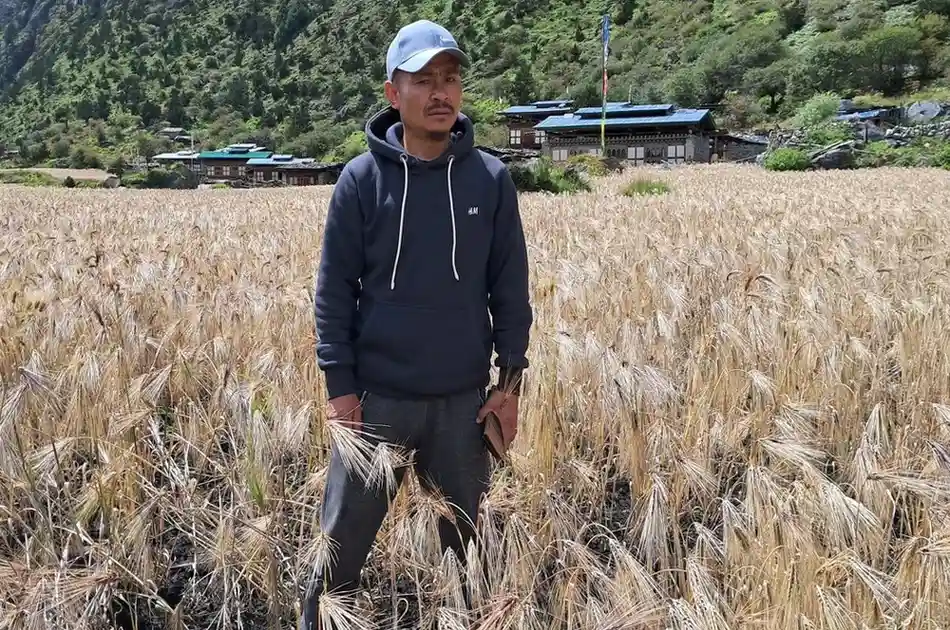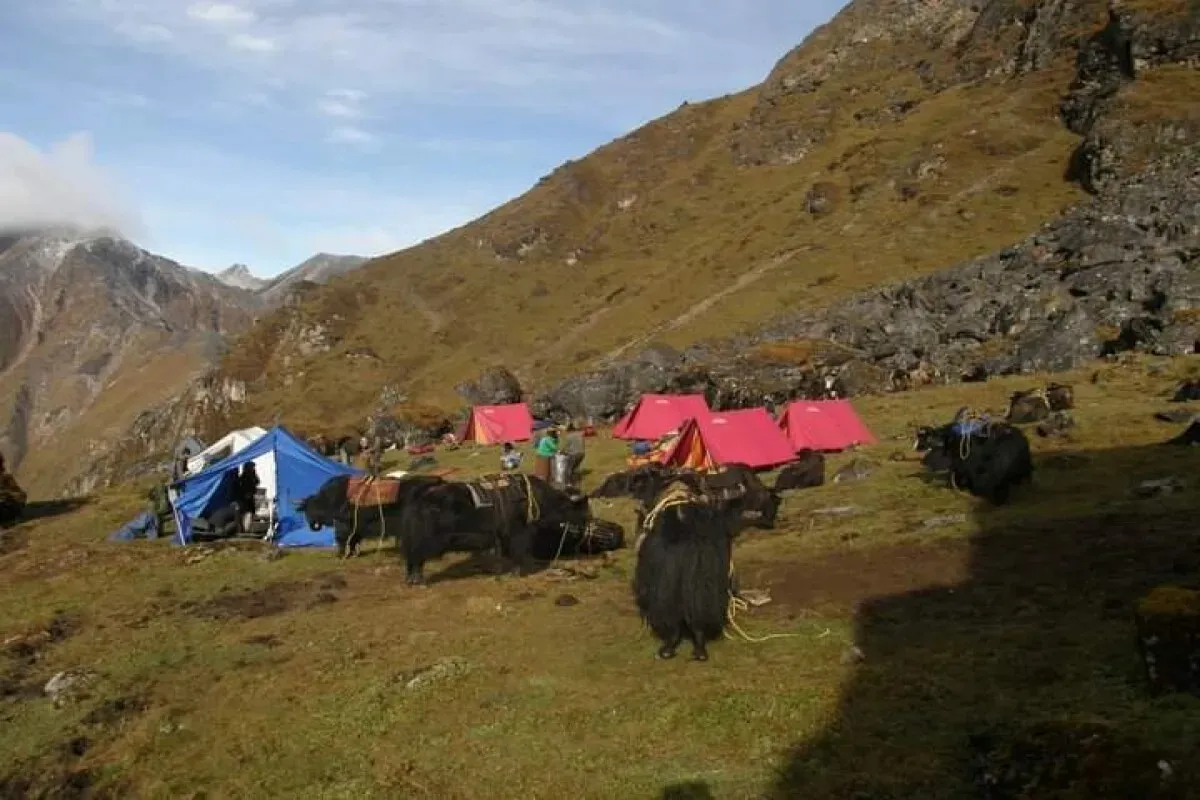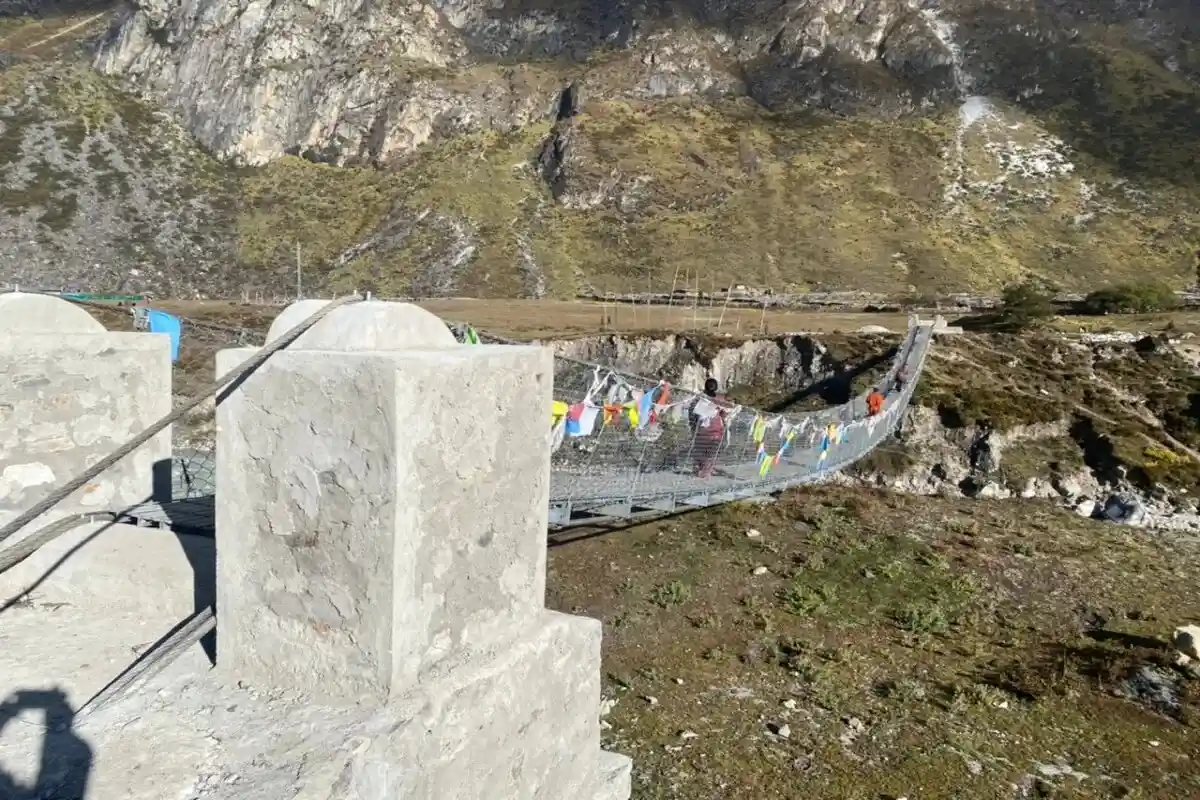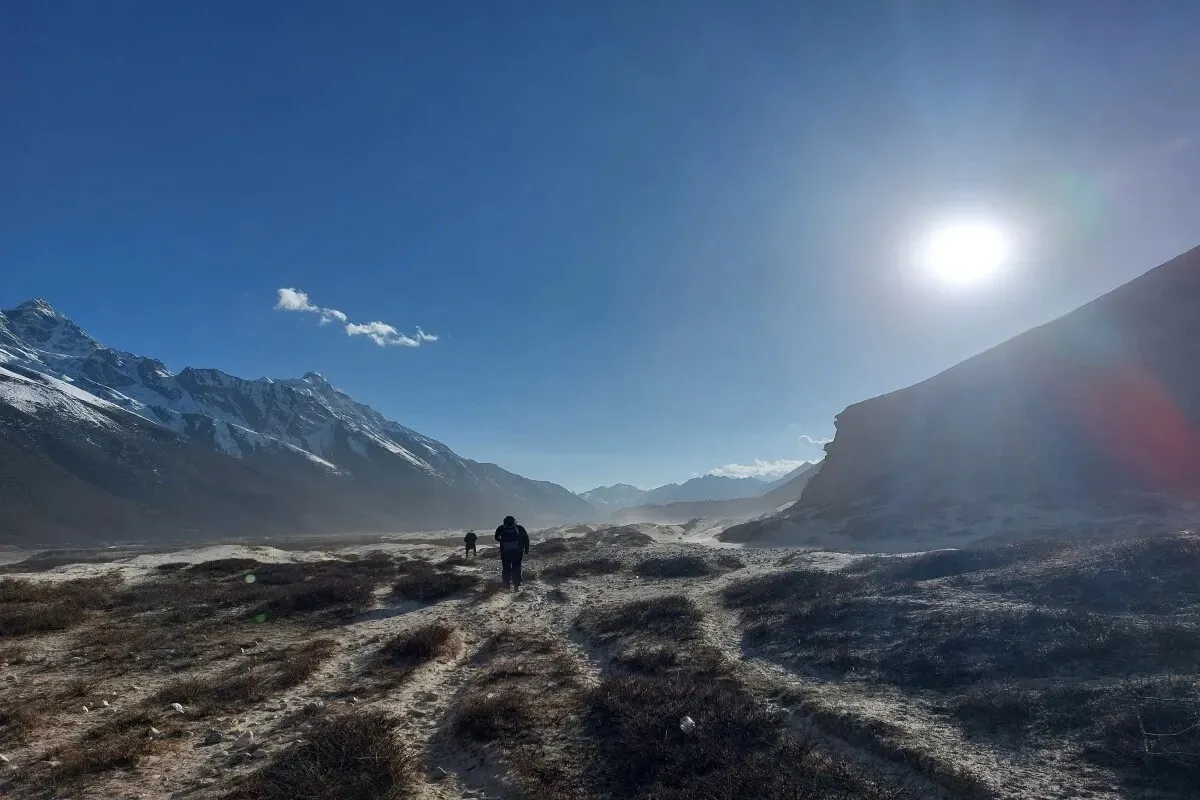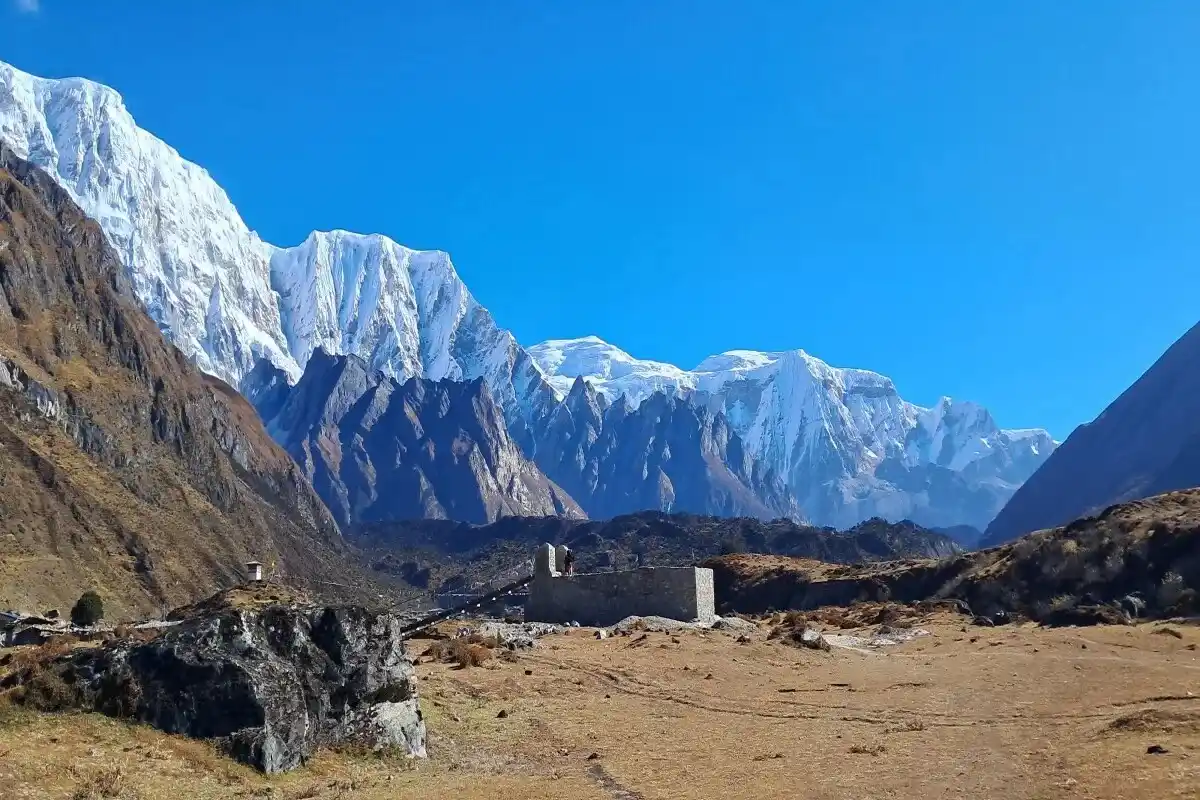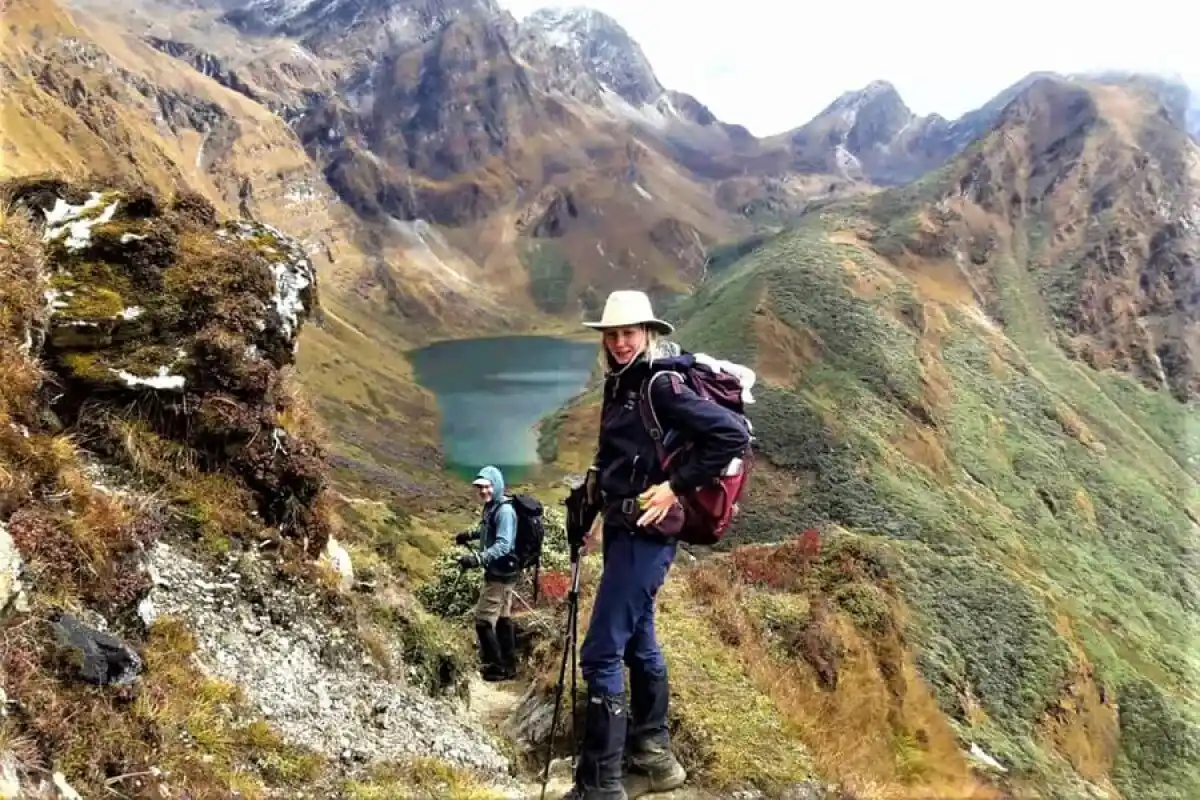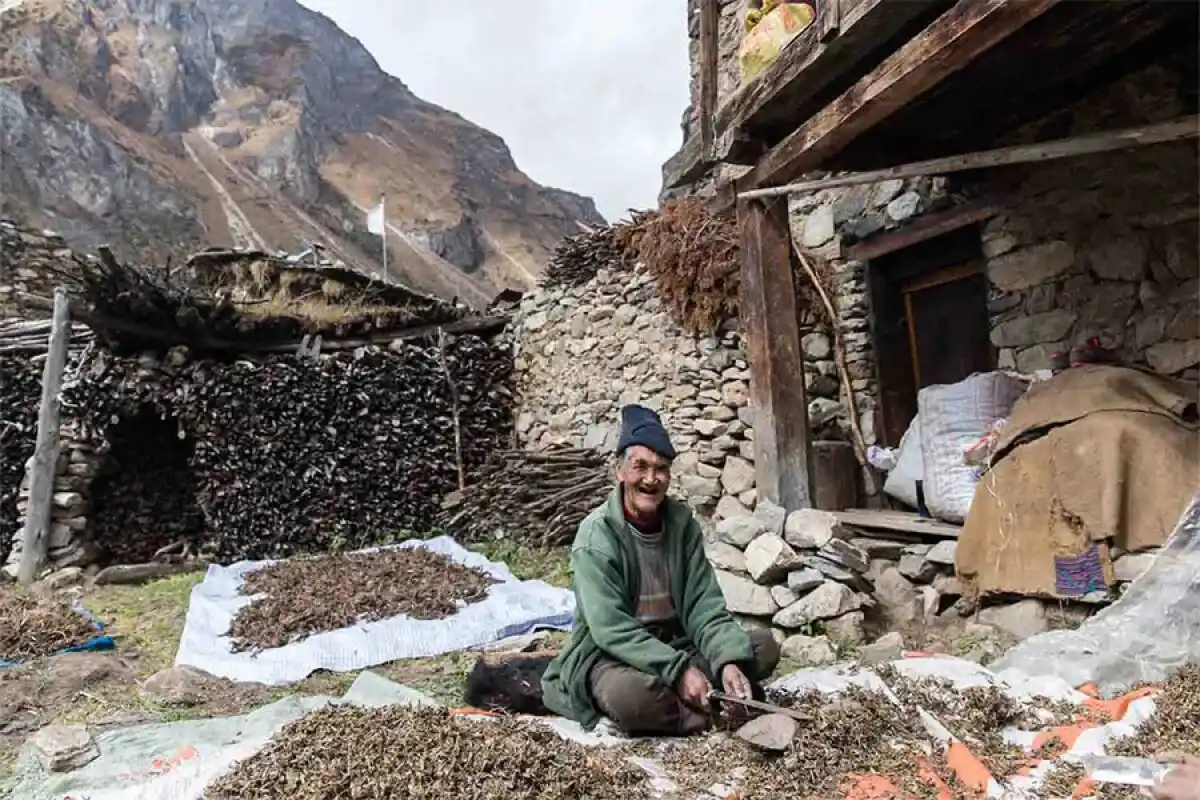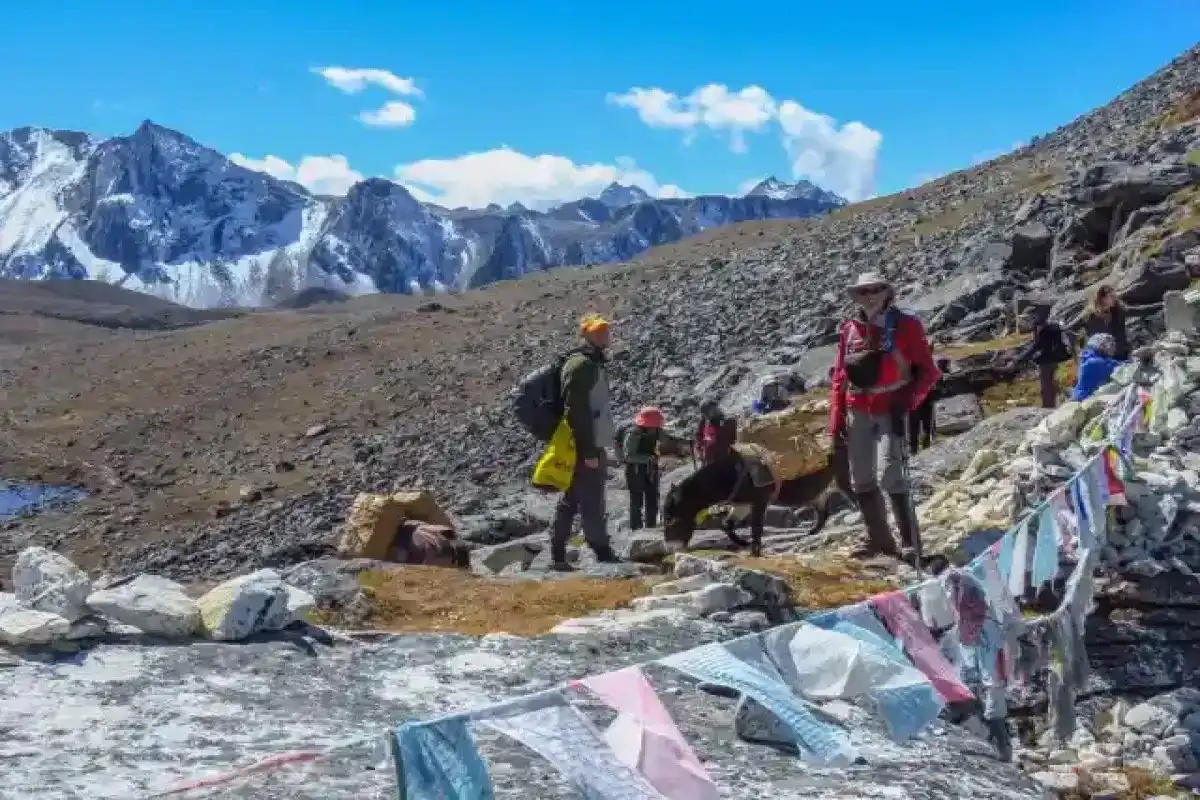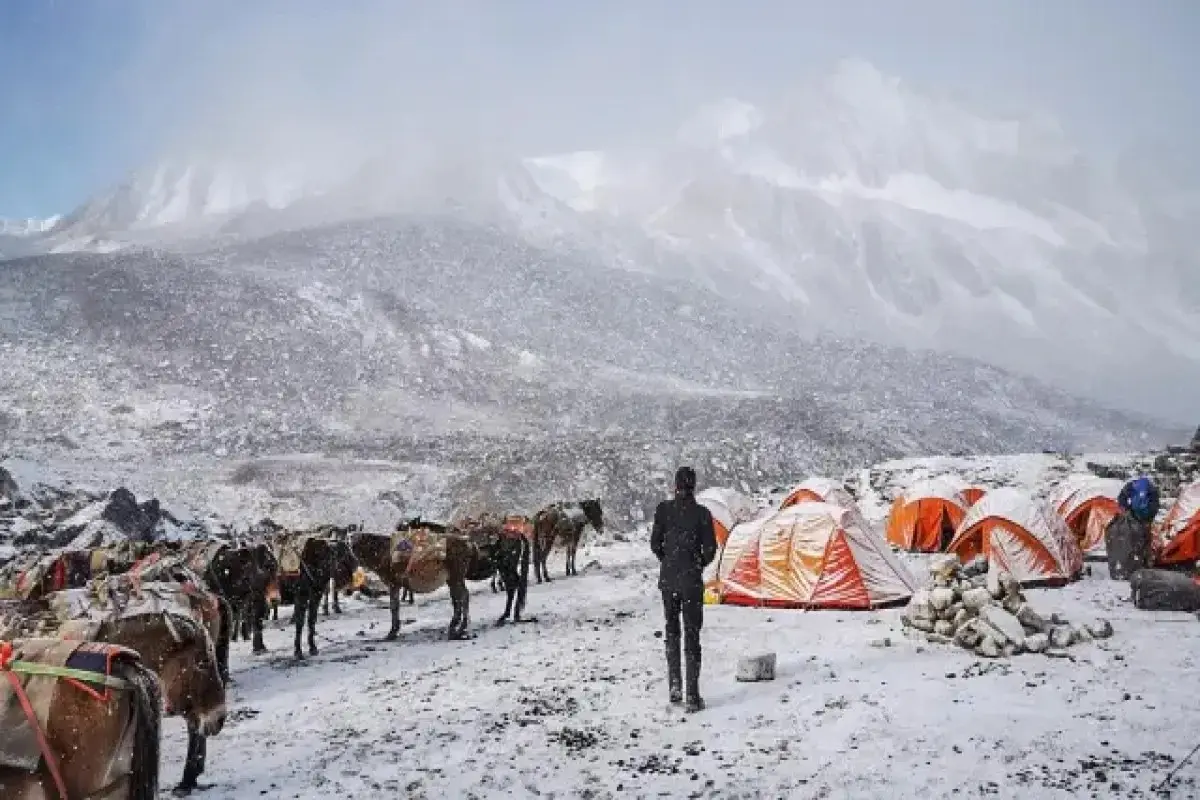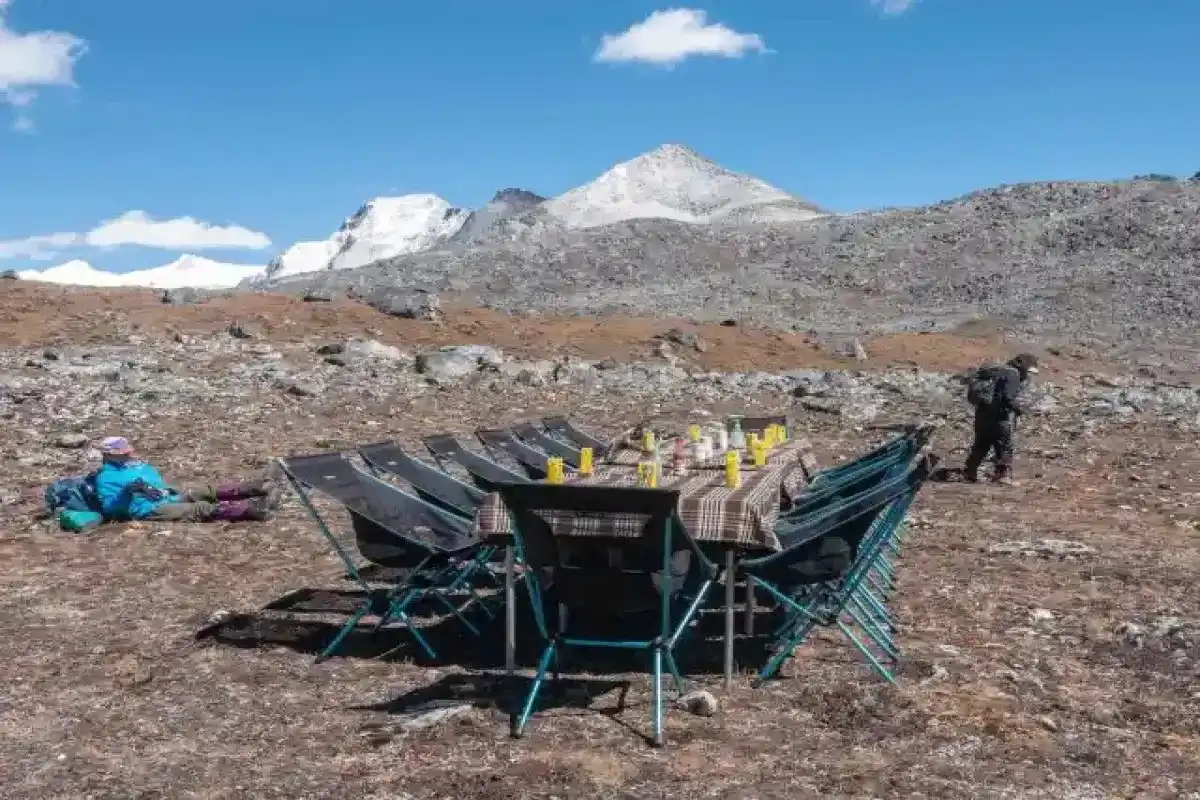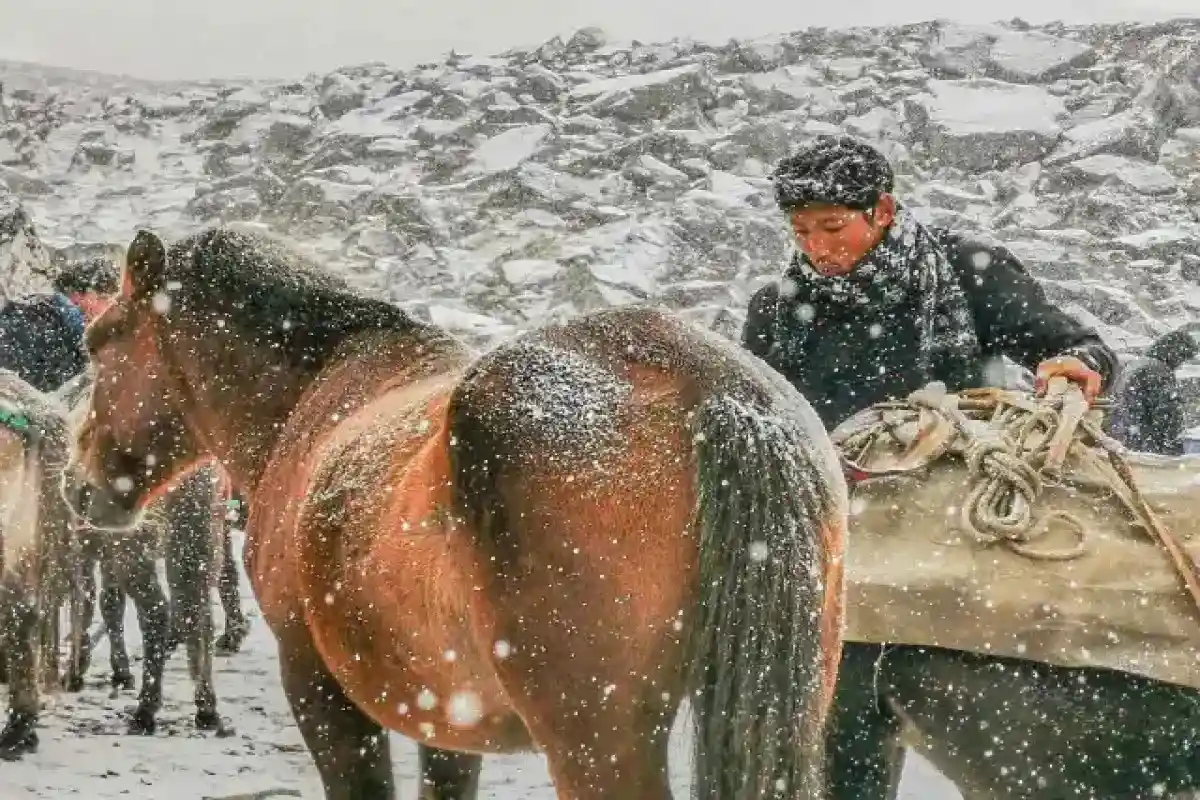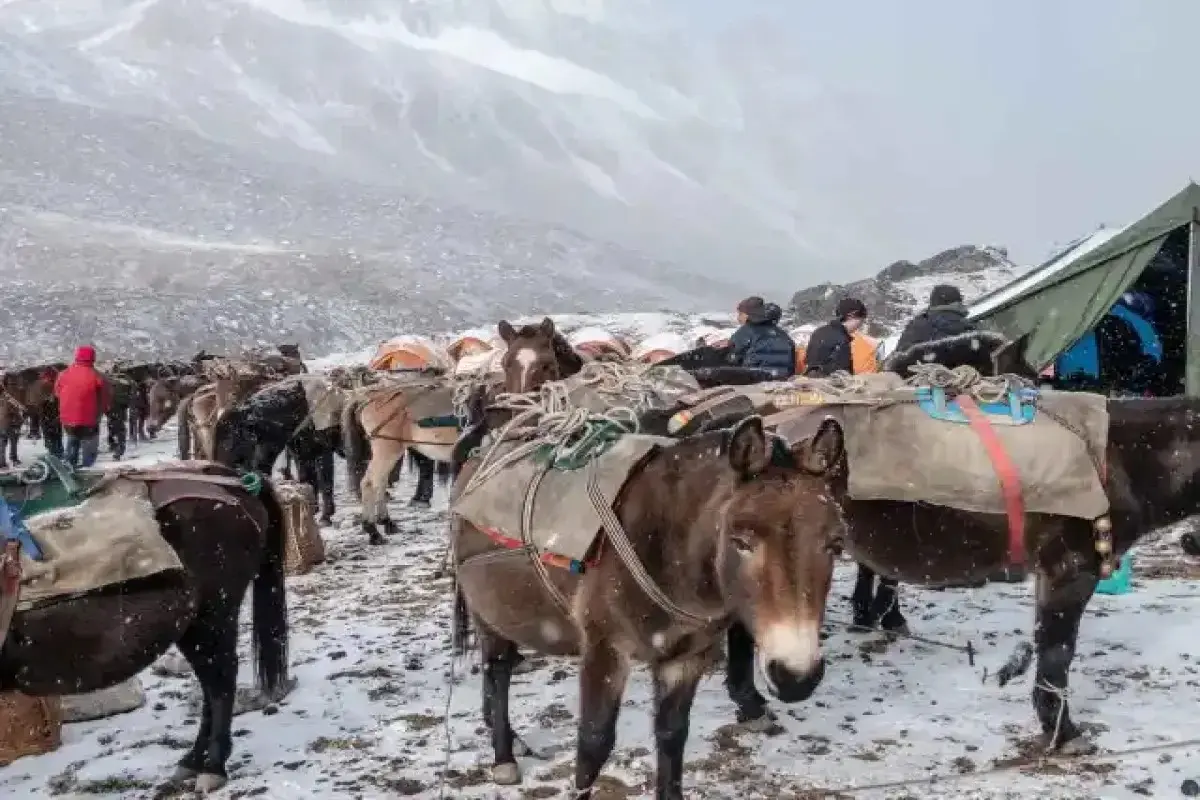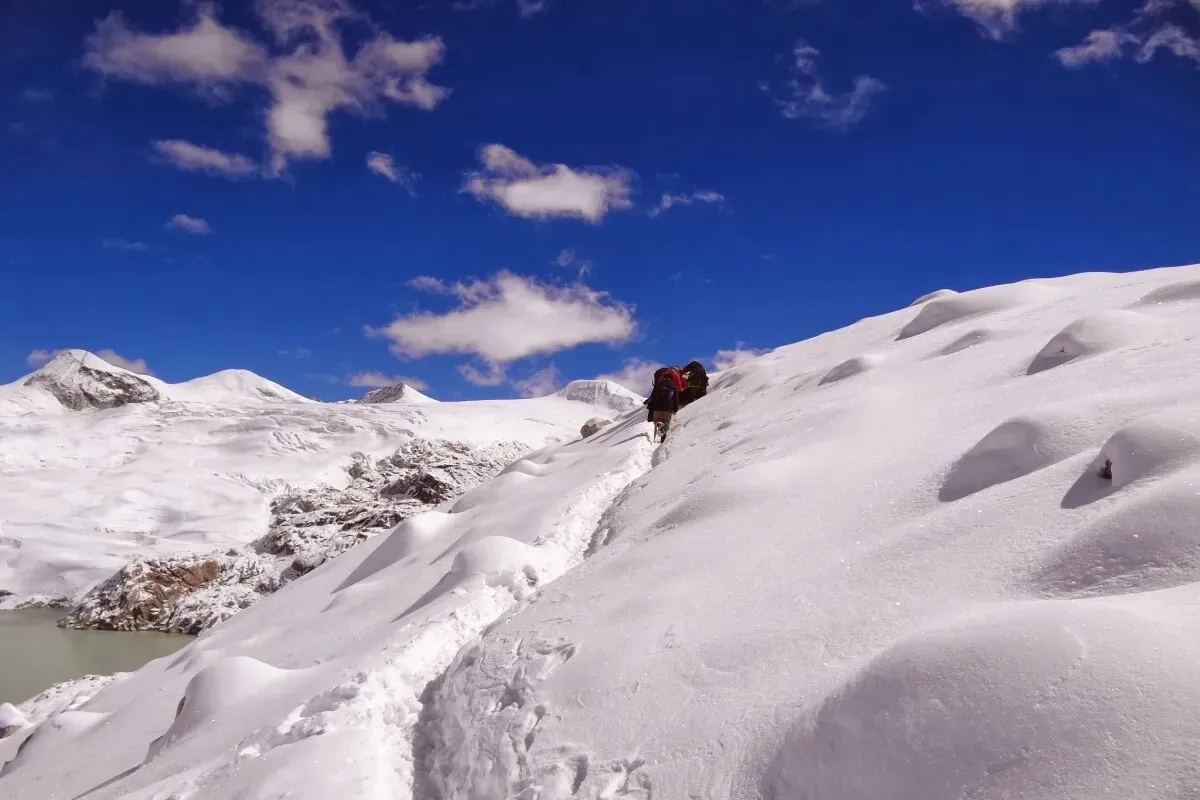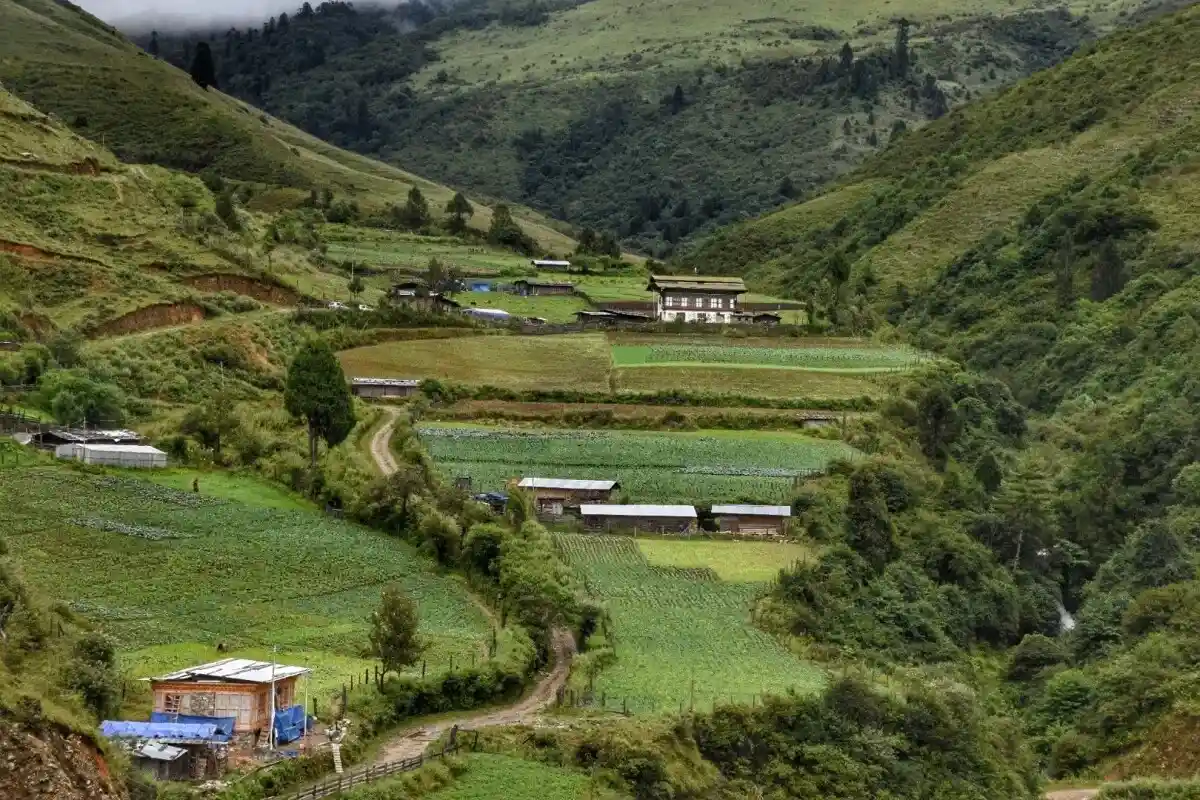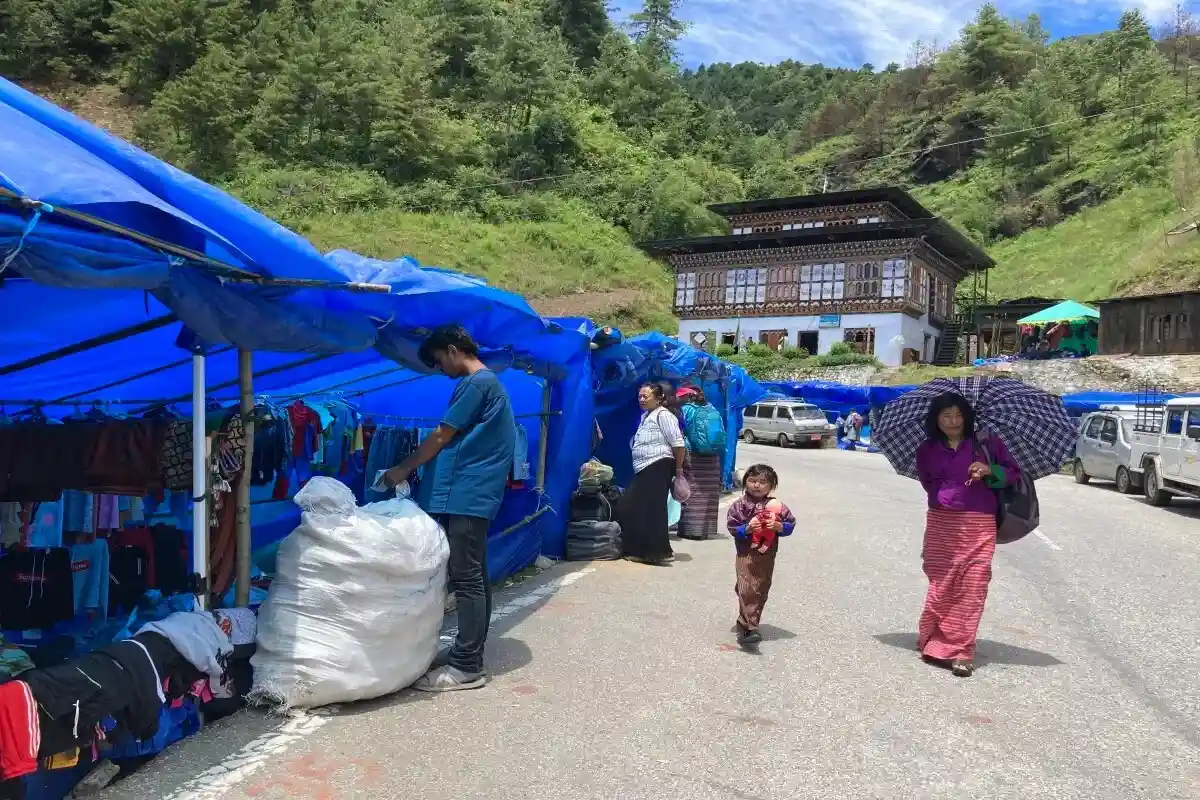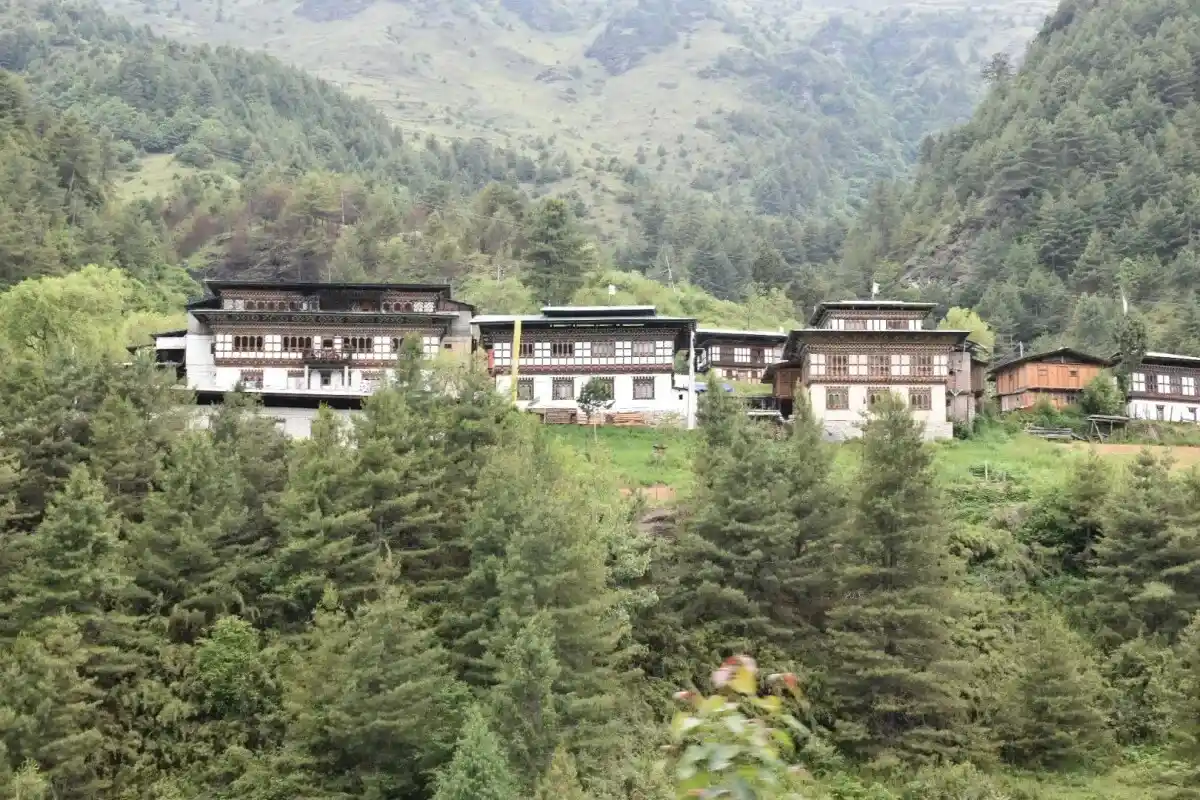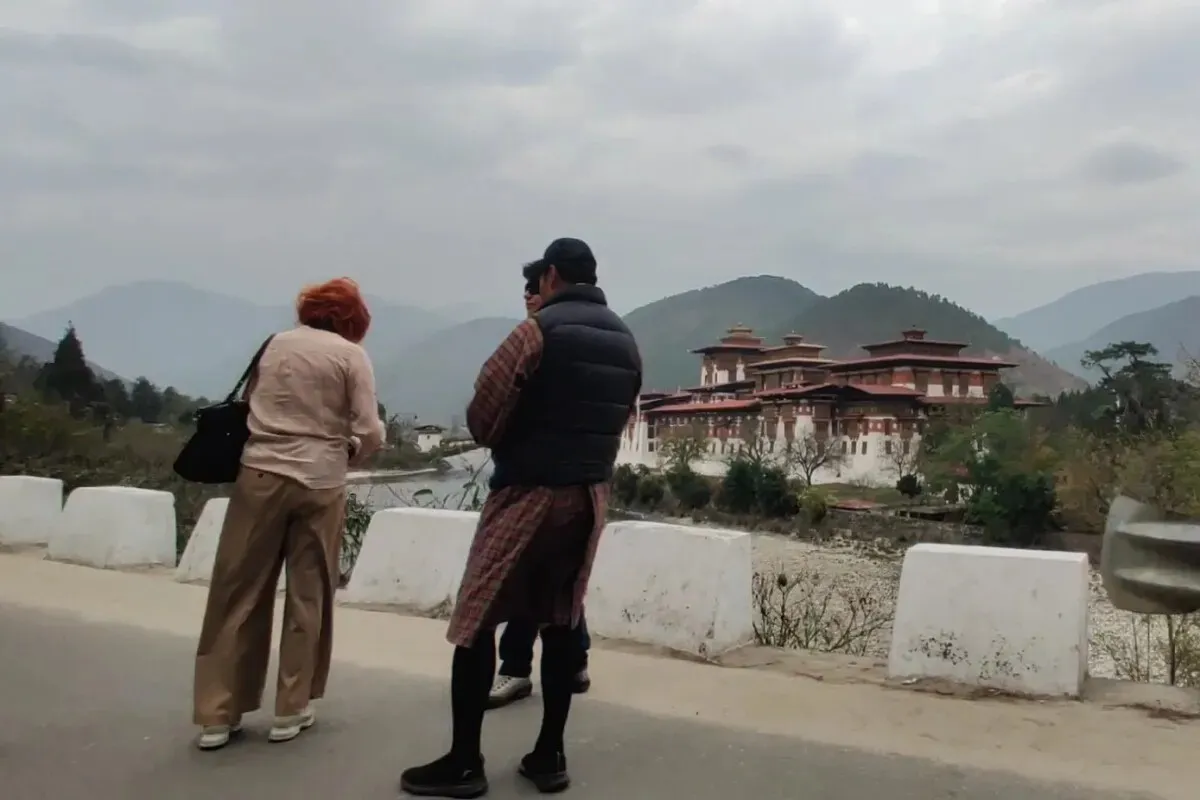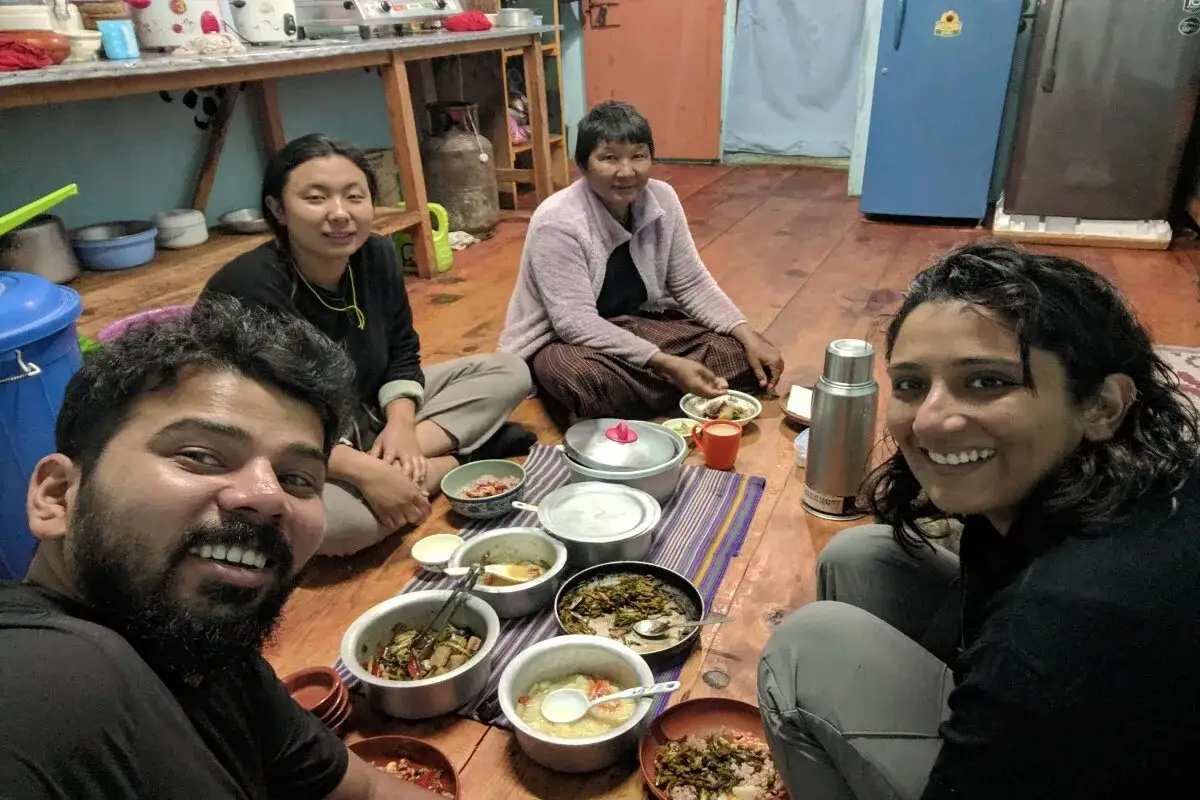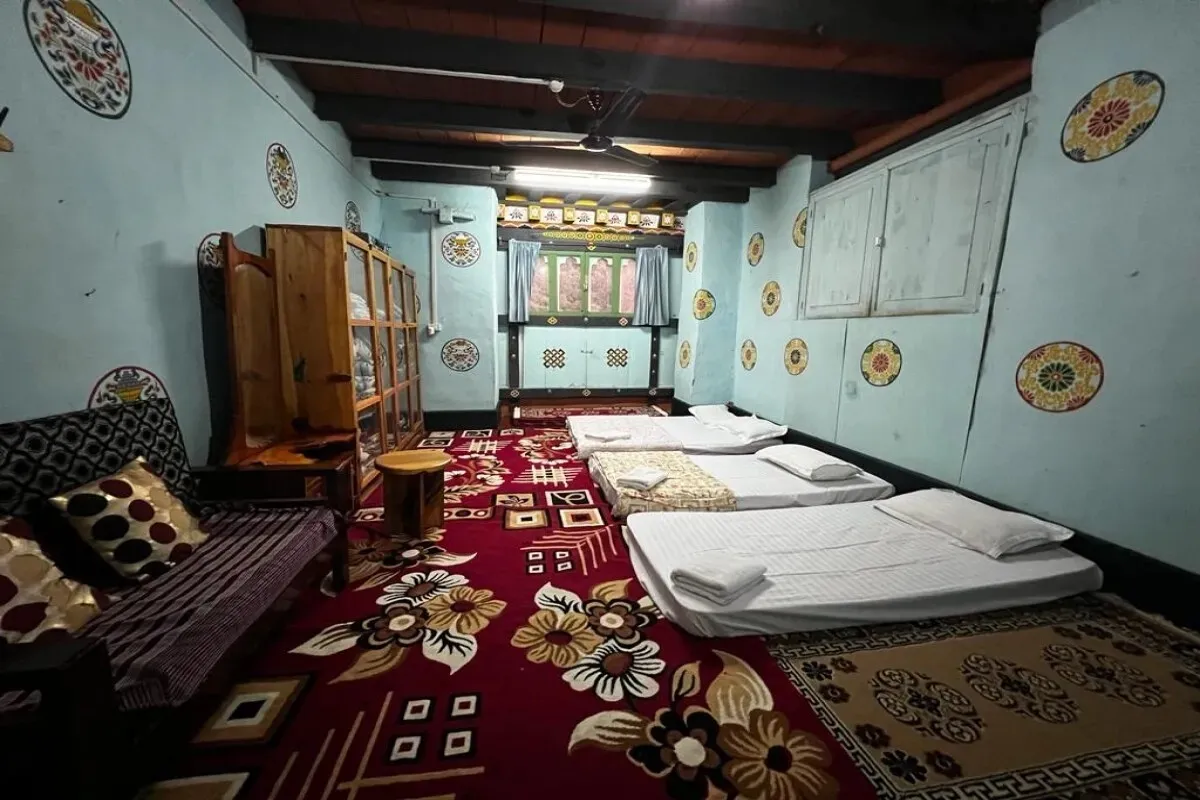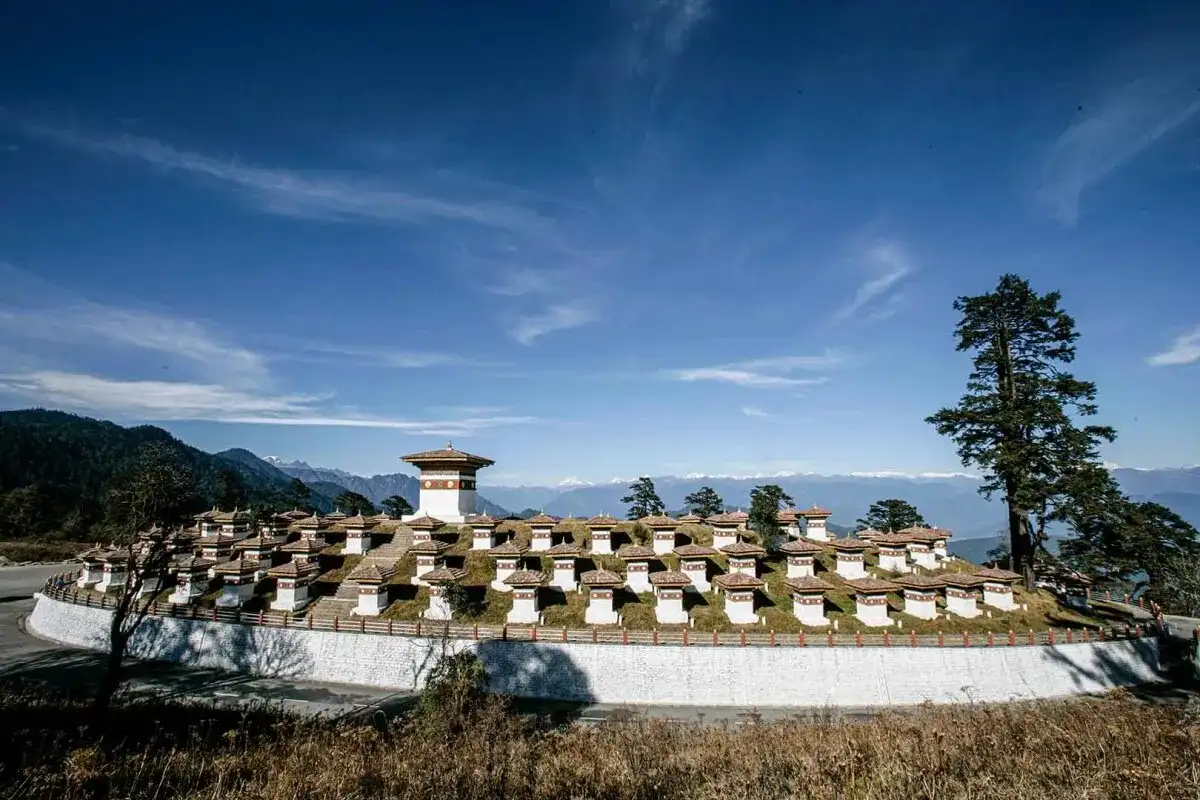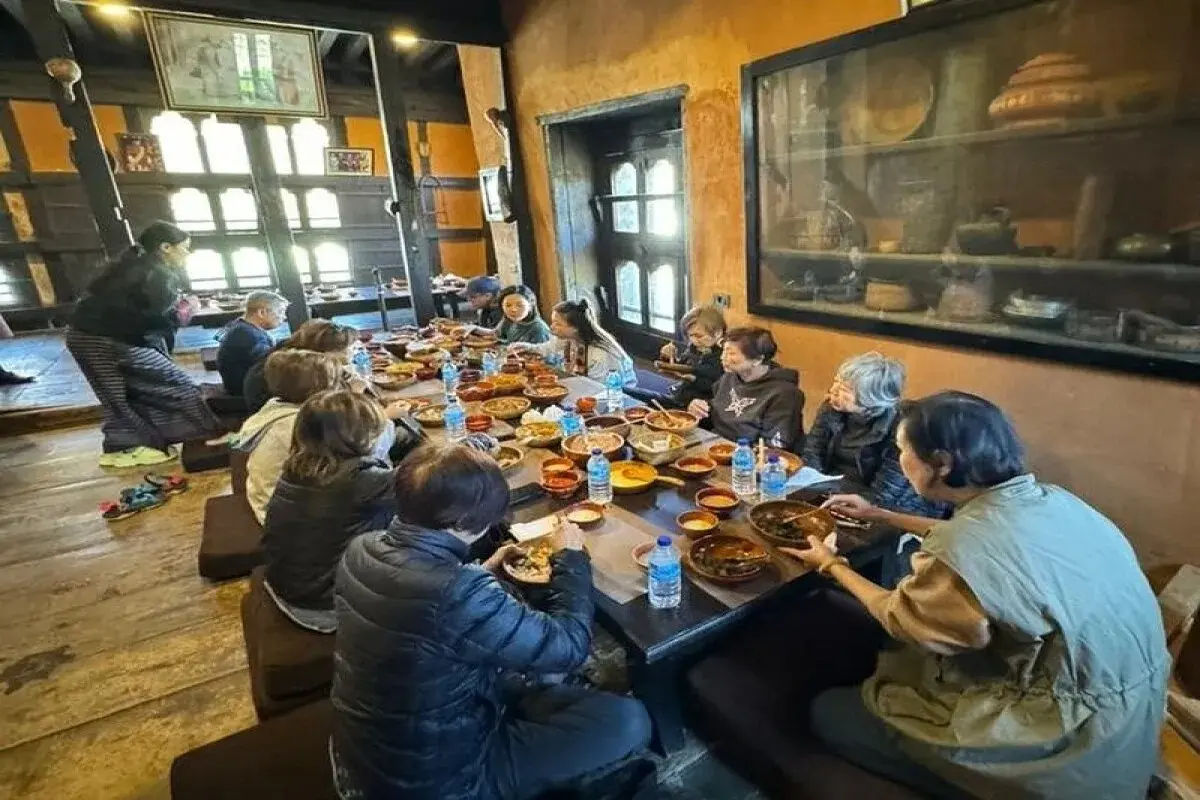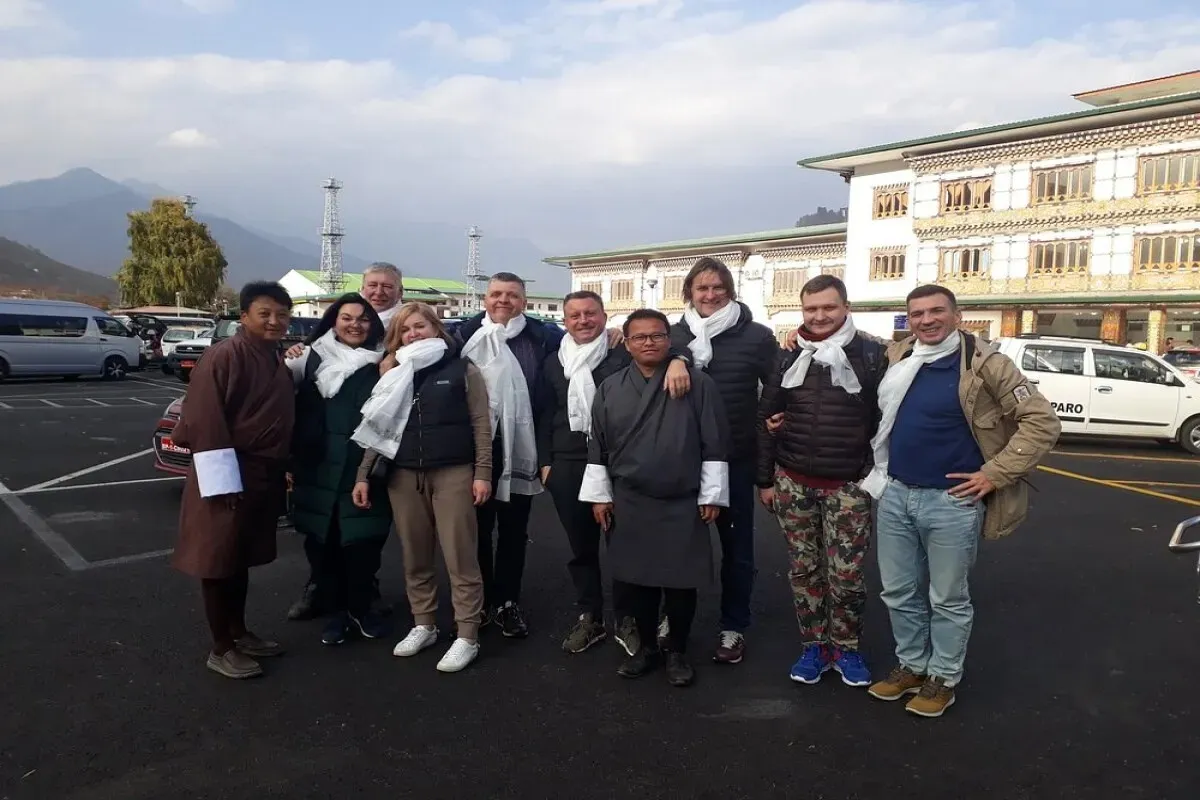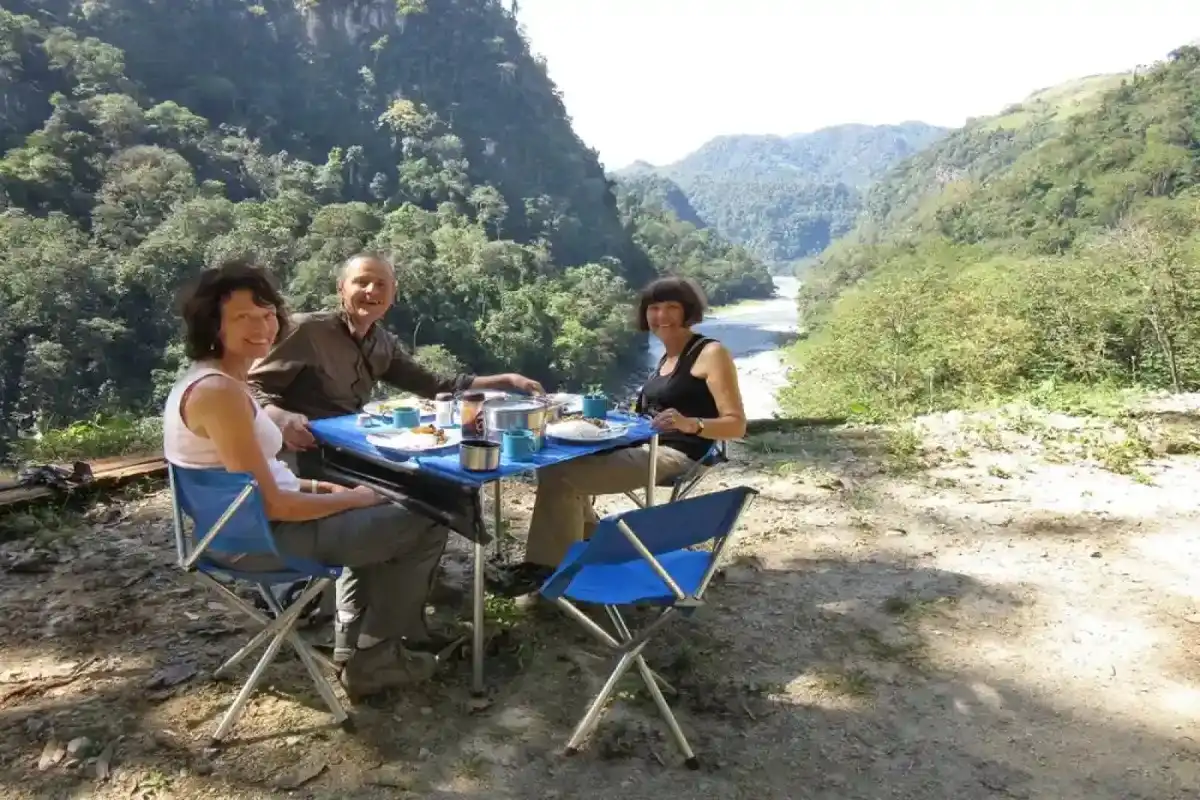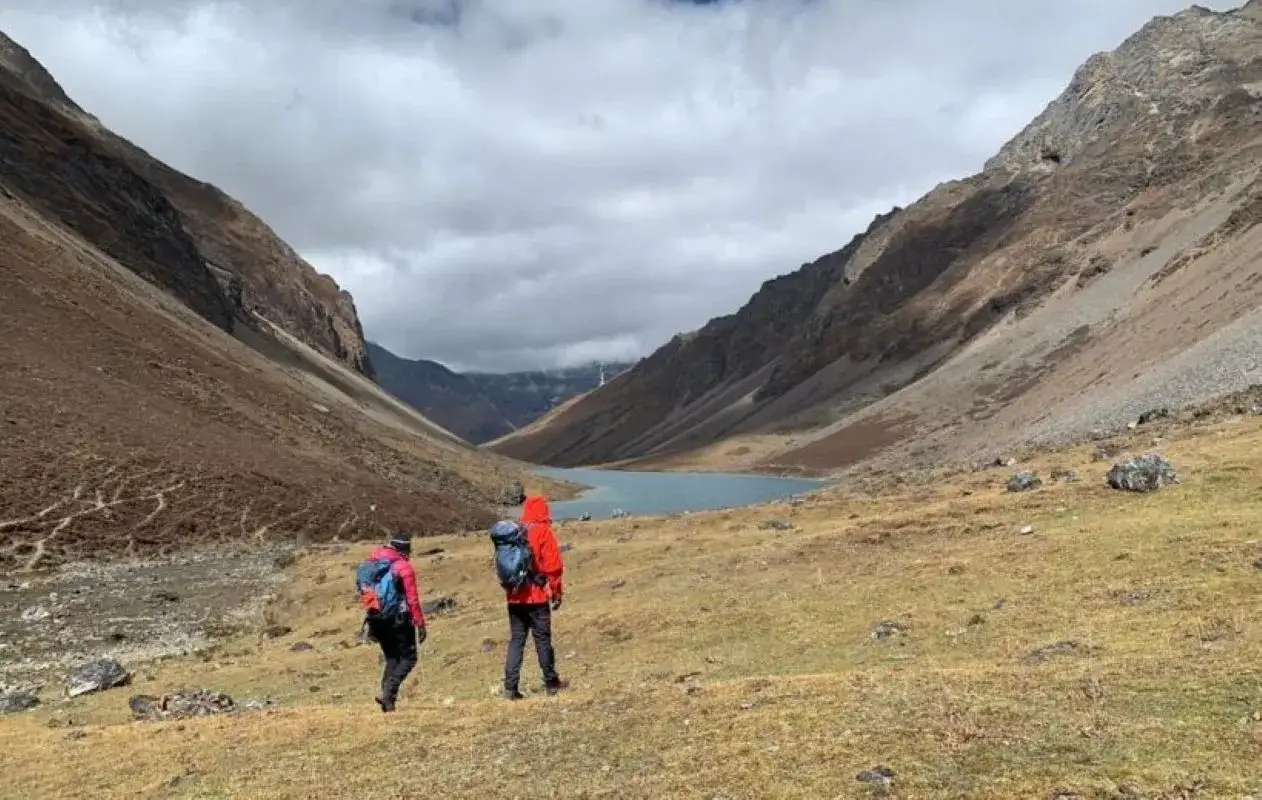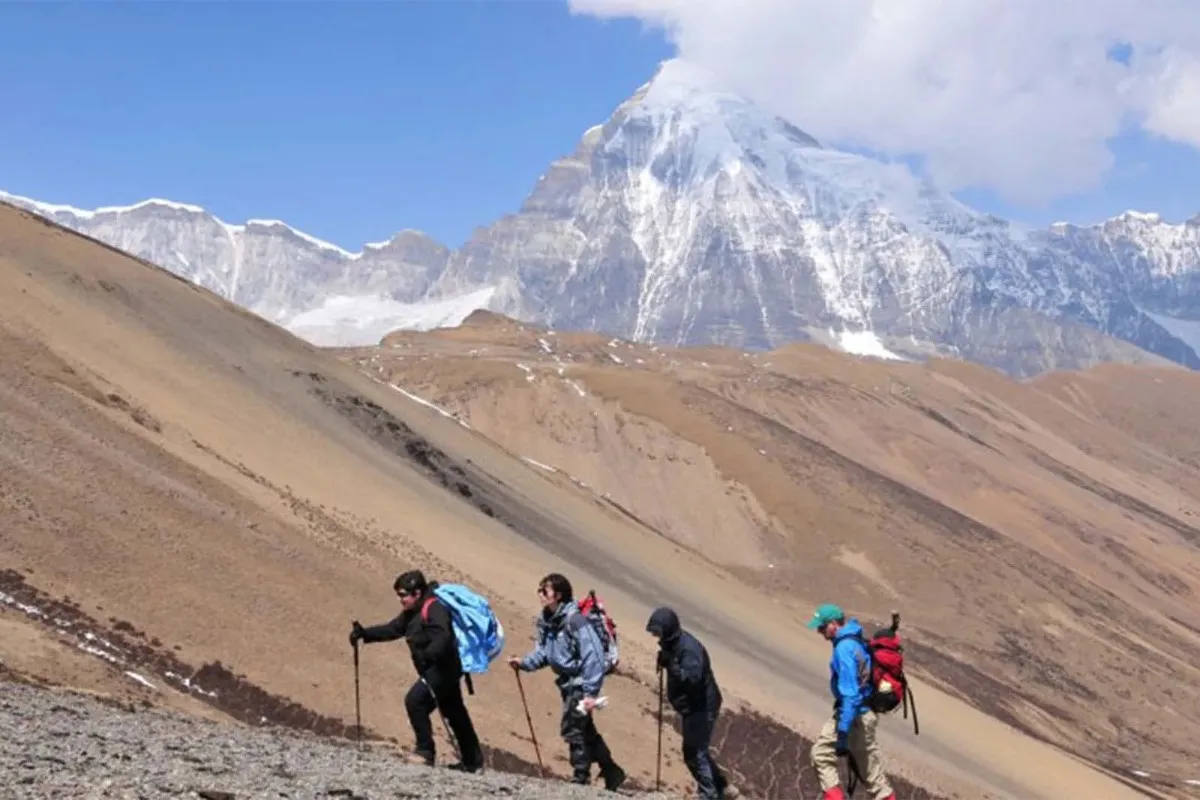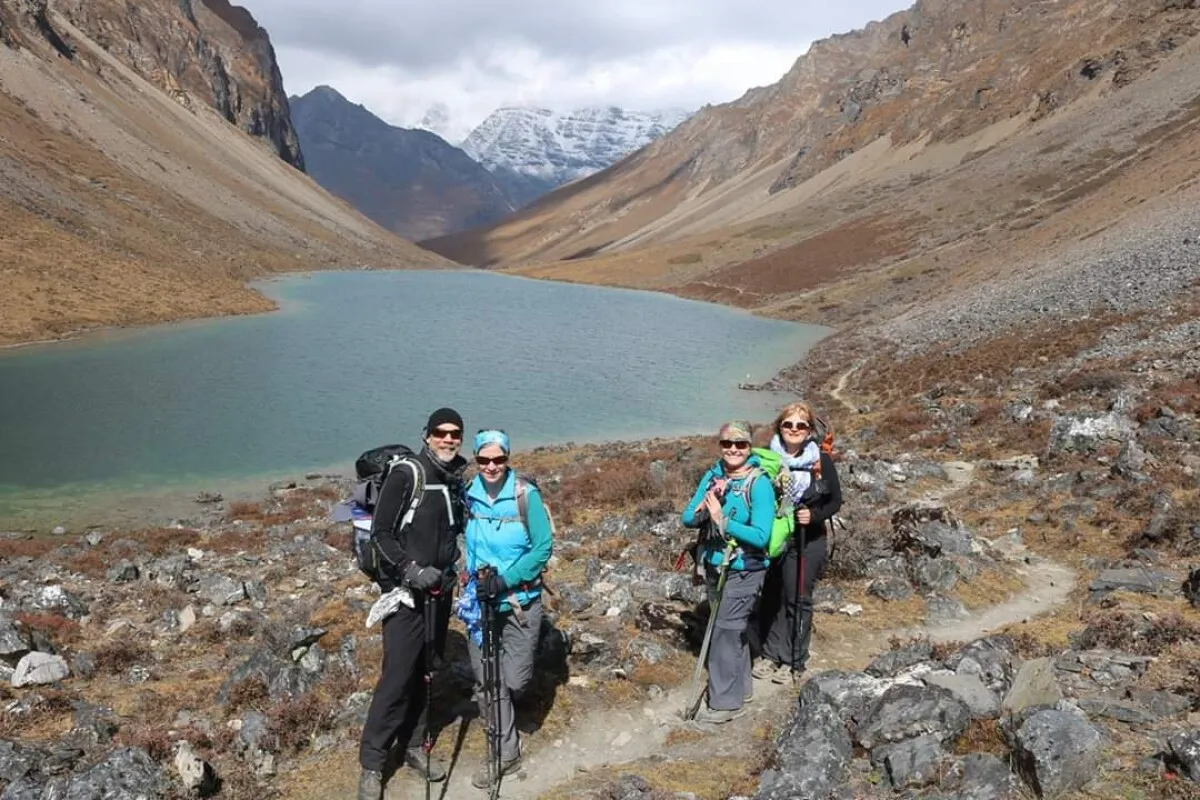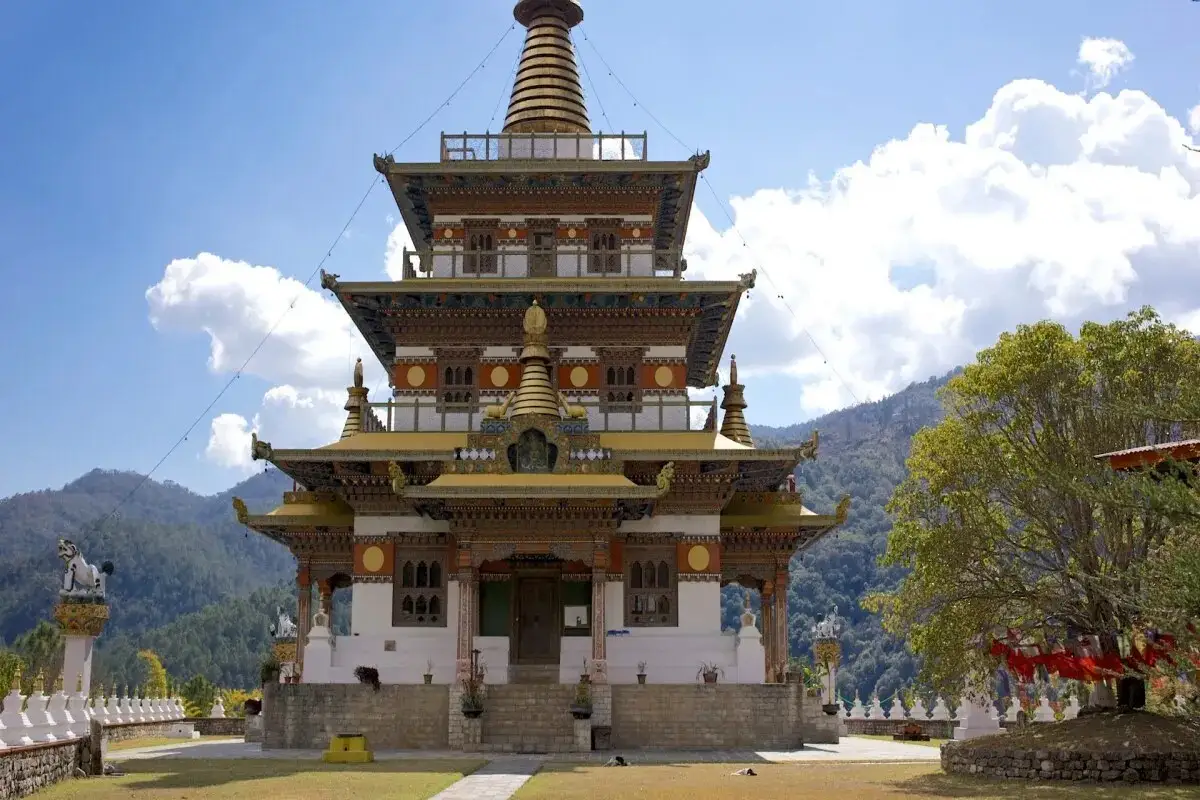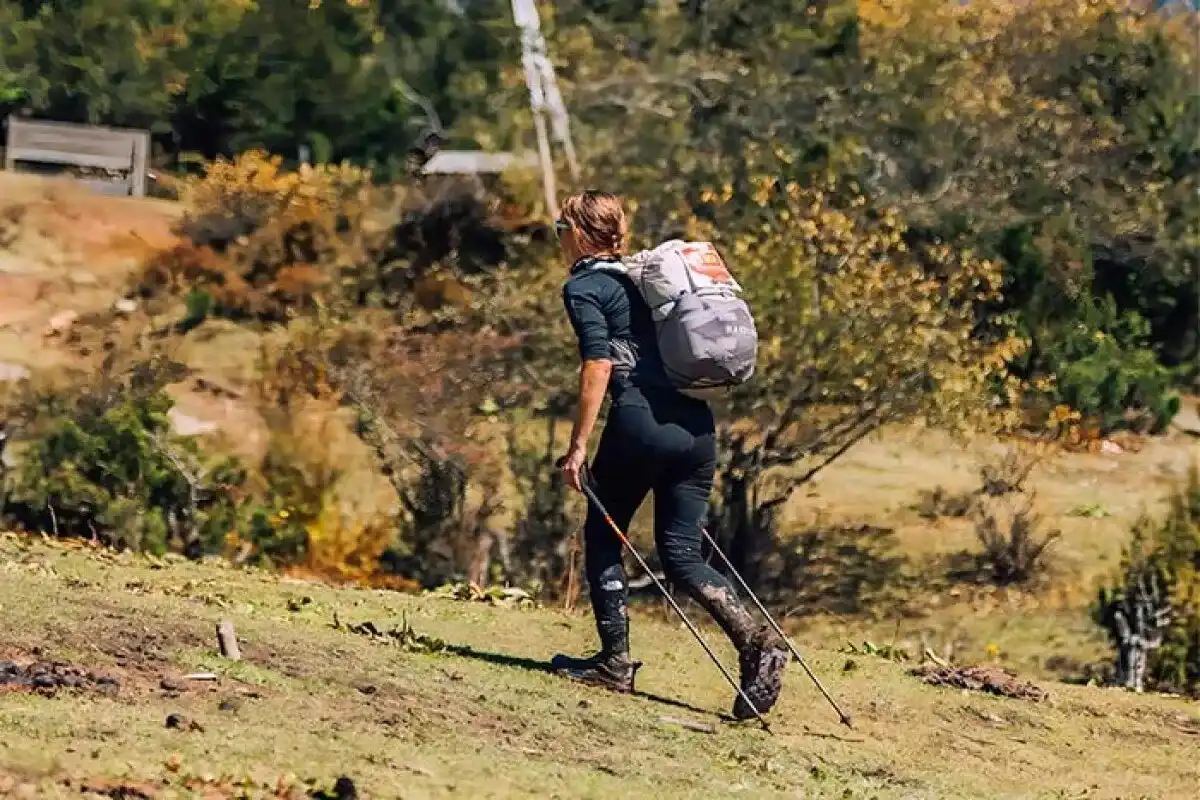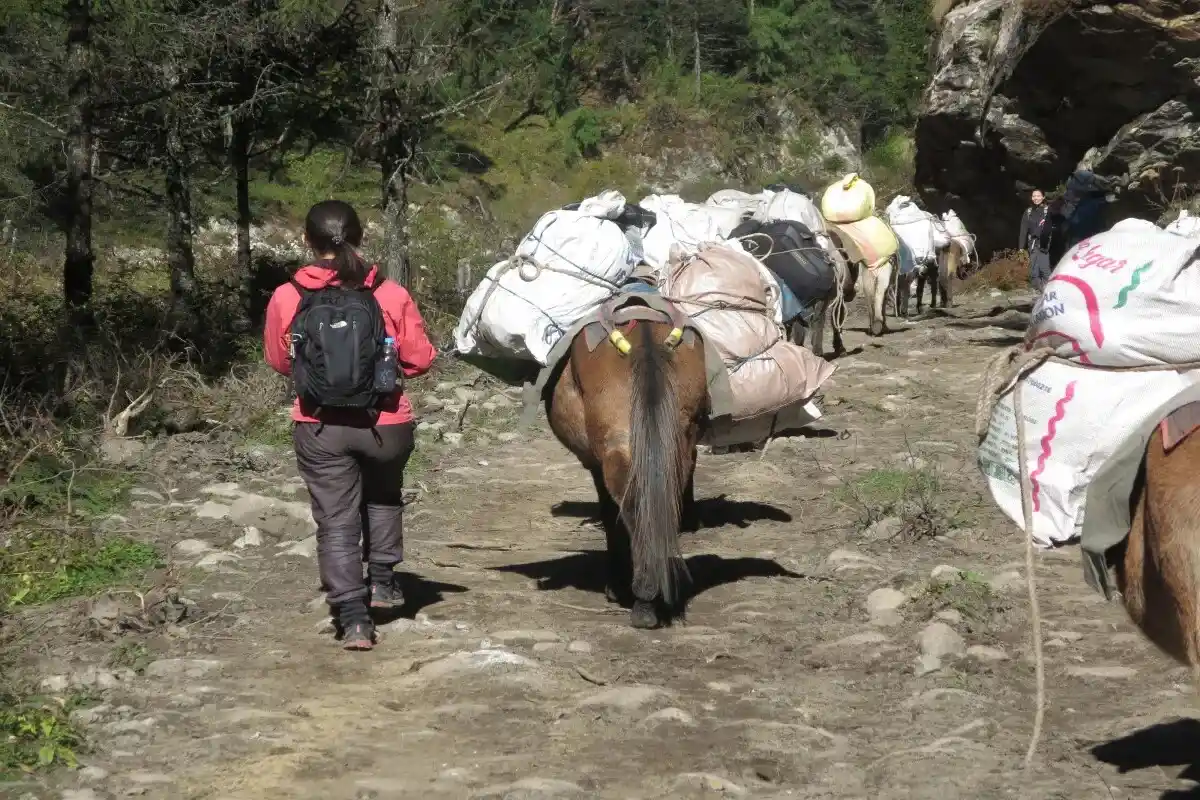Snowman Trek - 24 Days
The Snowman Trek is once in a lifetime Himalayan trek. It takes you to the remote places in Bhutan. The trail passes through high passes, remote valleys, and quiet villages. You walk at a high altitude where the sky feels very close. The land changes from green fields to rock and snow. You see many wild plants and rare birds. You meet the Layap people and other mountain communities. Their homes and ways of life are very different from the busy towns. This trek also touches sacred sites and old monasteries.
Highlights of the tour
Trip Overview
This trip includes local guides, eco-friendly camping, and community-based stays. That helps the villages and keeps the land safer. Trips are operated to sustain people and nature rather than to damage it. You should go on this trek if you are an admirer of nature and its culture and enjoy long walking days.
Highlights of the Snowman Trek
The Snowman Trek is a long trip. It rewards you with deep mountain views, old villages, and rare wildlife. Each day brings new scenes and new feelings.
Traversing through the Legendary Snowman Trek Route
This route follows high passes and remote ridges. There are numerous crossings at or above 4,500-5,000 meters. The land here is raw and wild. The weather can change fast. On clear days, you see sharp peaks and long horizons. The walk takes you through the Lunana and Laya regions. Most paths are narrow. Some are rocky and steep. You need steady legs and a calm mind. The challenge is big. The beauty is even more. Many trekkers say that this route is life-changing.
Exploring Remote Villages like Laya and Thanza
Villages on this trek are small and quiet. Laya is one of the most famous villages. There are also stone and wood houses. People in Laya dress in warm and woven garments and high hats. They rear yaks and cultivate barley in small fields. You might get to know how they live, and you may hear their tales. People are friendly. They may invite you for tea. Village life is slow. Vehicles and machines do not make much noise. The nights are full of stars. There are our professional guides who assist you throughout the tour.
Enjoying Authentic Bhutanese Hospitality
Bhutanese people are friendly. Simple meals are usually shared by the hosts in villages. Guests are treated with care. The guide helps you with translation and customs. You sleep in tents or small lodges. Meals are often cooked with local products. Hot soups and rice are common. After a long day, a warm meal feels very good. Respect and quiet manners are valued by people. You see small shrines and prayer flags at many stops. The culture here is gentle and slow.
Camping in Pristine Alpine Landscapes
Camps are pitched in remote areas off the road. You rise to coolness and light of day. It can be a windy morning. Nights bring big stars and a wide sky. Camps are located near small streams or on soft grassy areas. Some nights, you may camp above tree line where only alpine plants grow. The tents protect you from wind and chill. Camp lets you feel the mountains from a close view. You get to know about local customs and myths.
Visiting Ancient Monasteries, Chortens, and Spiritually Significant Places
There are a few monasteries and chortens along the road. These are sacred places for local people. Monks or villagers may come to pray. You can learn about local rituals and stories. Many spots have prayer flags and carved stones. These places add a quiet, spiritual side to the trek. They remind you that this is a lived-in and loved land. Nature combined with faith allows the visit to be more than just a walk.
Spotting rare Himalayan wildlife, birds, and vibrant alpine flora
The area has rare animals and birds. You may see blue sheep, marmots, and red foxes. Bird life includes high-altitude species. During the summer, you may get to see the colourful Alpine flowers growing. You can see many plants and shrubs in spring and autumn. The places are wild and full of life. Staying quiet and moving slowly raises your chances of spotting animals. Guides know the best areas to look for wildlife and birds.
Why Is the Snowman Trail Called Bhutan’s Best-Kept Secret?
The Snowman Trek stays away from crowded places. It goes into parts of Bhutan that few visitors reach. The route winds along the northern border with Tibet. It crosses many high passes and isolated valleys. Roads and towns are far below. It requires many days to complete this trek and is a bit challenging. The remoteness keeps the land quiet and wild. You get to feel a rare sense of being in a place few eyes have seen. That is why many call it a secret. It is a secret not because it is concealed, but because a very few of the strong and patient travelers pass through it.
What Makes Each Camp Along the Route So Unique?
Each camp has its own unique atmosphere. Some camps are located in green meadows. They have views of distant peaks and herds of yaks. Other camps are high and cold. There you may sleep above the tree line with only stones and thin air around you. Some camps are close to small villages. At these spots, you get to hear village sounds in the early morning. Other camps are deep in quiet valleys with only birds and wind. The tents, food, and fires feel different at each stop. These shifts keep the days fresh. One night may feel cozy and warm. The next night may feel raw and open. This variety is part of what makes the trek so charming.
What Awaits Beyond the Last Village on the Trail?
Once you leave the last village on the trail or path, you start moving into remote areas. You walk into a pure mountain and terrain. Fields and small houses give way to rock and snow. The paths will be narrow. There you will not find any shops or lodges. Food and help are far behind. You will feel a strong sense of solitude. The air is thinner and the sky looks closer. At times, you may cross glacial moraine or patches of snow. This part of the trek tests your strength and your calmness. It also gifts you with views and a quiet that is hard to find elsewhere.
Conclusion
The Snowman Trek is a deep and lasting journey. It asks for strength, patience, and respect. In return, it gives wide mountain views, rare wildlife, and real cultural moments. You will get to meet Layap people and stay in wild, quiet places. Each day brings small wonders and hard work. The trek also supports local people when run in a careful and fair way. Guides, porters, and local hosts make a significant contribution to land and cultural safety. You could not have a better vacation trip than this in the rough country with its long days, bare village living, and rugged nature. Train hard, plan it out, and go to the land and people decently. These memories you come back with, they stay for a long time.
This trip includes local guides, eco-friendly camping, and community-based stays. That helps the villages and keeps the land safer. Trips are operated to sustain people and nature rather than to damage it. You should go on this trek if you are an admirer of nature and its culture and enjoy long walking days.
Highlights of the Snowman Trek
The Snowman Trek is a long trip. It rewards you with deep mountain views, old villages, and rare wildlife. Each day brings new scenes and new feelings.
Traversing through the Legendary Snowman Trek Route
This route follows high passes and remote ridges. There are numerous crossings at or above 4,500-5,000 meters. The land here is raw and wild. The weather can change fast. On clear days, you see sharp peaks and long horizons. The walk takes you through the Lunana and Laya regions. Most paths are narrow. Some are rocky and steep. You need steady legs and a calm mind. The challenge is big. The beauty is even more. Many trekkers say that this route is life-changing.
Exploring Remote Villages like Laya and Thanza
Villages on this trek are small and quiet. Laya is one of the most famous villages. There are also stone and wood houses. People in Laya dress in warm and woven garments and high hats. They rear yaks and cultivate barley in small fields. You might get to know how they live, and you may hear their tales. People are friendly. They may invite you for tea. Village life is slow. Vehicles and machines do not make much noise. The nights are full of stars. There are our professional guides who assist you throughout the tour.
Enjoying Authentic Bhutanese Hospitality
Bhutanese people are friendly. Simple meals are usually shared by the hosts in villages. Guests are treated with care. The guide helps you with translation and customs. You sleep in tents or small lodges. Meals are often cooked with local products. Hot soups and rice are common. After a long day, a warm meal feels very good. Respect and quiet manners are valued by people. You see small shrines and prayer flags at many stops. The culture here is gentle and slow.
Camping in Pristine Alpine Landscapes
Camps are pitched in remote areas off the road. You rise to coolness and light of day. It can be a windy morning. Nights bring big stars and a wide sky. Camps are located near small streams or on soft grassy areas. Some nights, you may camp above tree line where only alpine plants grow. The tents protect you from wind and chill. Camp lets you feel the mountains from a close view. You get to know about local customs and myths.
Visiting Ancient Monasteries, Chortens, and Spiritually Significant Places
There are a few monasteries and chortens along the road. These are sacred places for local people. Monks or villagers may come to pray. You can learn about local rituals and stories. Many spots have prayer flags and carved stones. These places add a quiet, spiritual side to the trek. They remind you that this is a lived-in and loved land. Nature combined with faith allows the visit to be more than just a walk.
Spotting rare Himalayan wildlife, birds, and vibrant alpine flora
The area has rare animals and birds. You may see blue sheep, marmots, and red foxes. Bird life includes high-altitude species. During the summer, you may get to see the colourful Alpine flowers growing. You can see many plants and shrubs in spring and autumn. The places are wild and full of life. Staying quiet and moving slowly raises your chances of spotting animals. Guides know the best areas to look for wildlife and birds.
Why Is the Snowman Trail Called Bhutan’s Best-Kept Secret?
The Snowman Trek stays away from crowded places. It goes into parts of Bhutan that few visitors reach. The route winds along the northern border with Tibet. It crosses many high passes and isolated valleys. Roads and towns are far below. It requires many days to complete this trek and is a bit challenging. The remoteness keeps the land quiet and wild. You get to feel a rare sense of being in a place few eyes have seen. That is why many call it a secret. It is a secret not because it is concealed, but because a very few of the strong and patient travelers pass through it.
What Makes Each Camp Along the Route So Unique?
Each camp has its own unique atmosphere. Some camps are located in green meadows. They have views of distant peaks and herds of yaks. Other camps are high and cold. There you may sleep above the tree line with only stones and thin air around you. Some camps are close to small villages. At these spots, you get to hear village sounds in the early morning. Other camps are deep in quiet valleys with only birds and wind. The tents, food, and fires feel different at each stop. These shifts keep the days fresh. One night may feel cozy and warm. The next night may feel raw and open. This variety is part of what makes the trek so charming.
What Awaits Beyond the Last Village on the Trail?
Once you leave the last village on the trail or path, you start moving into remote areas. You walk into a pure mountain and terrain. Fields and small houses give way to rock and snow. The paths will be narrow. There you will not find any shops or lodges. Food and help are far behind. You will feel a strong sense of solitude. The air is thinner and the sky looks closer. At times, you may cross glacial moraine or patches of snow. This part of the trek tests your strength and your calmness. It also gifts you with views and a quiet that is hard to find elsewhere.
Conclusion
The Snowman Trek is a deep and lasting journey. It asks for strength, patience, and respect. In return, it gives wide mountain views, rare wildlife, and real cultural moments. You will get to meet Layap people and stay in wild, quiet places. Each day brings small wonders and hard work. The trek also supports local people when run in a careful and fair way. Guides, porters, and local hosts make a significant contribution to land and cultural safety. You could not have a better vacation trip than this in the rough country with its long days, bare village living, and rugged nature. Train hard, plan it out, and go to the land and people decently. These memories you come back with, they stay for a long time.
Short Itinerary
Arrive in Paro, short town walk, view Paro Dzong and National Museum, welcome dinner
Hike to Taktsang (Tiger’s Nest Monastery), explore Paro market and temples, prepare for trek
Drive to Sharna Zampa, meet trekking crew, trek start, camp at Soi Thangkha
Trek through pastures and yak herders’ land, reach Jangothang camp with mountain views
Acclimatization day at Jangothang, short hikes and gear check, rest with valley scenery
Trek across meadows and valleys to Lingshi village, cultural encounters, overnight stay
Walk through forests and open slopes, river crossings, camp at quiet Chebisa
Trek along meadows and streams, reach Shoumuthang with wide mountain views
Rocky trail and ridges, careful footing, starlit night at Robluthnag camp
Walk across ridges and valleys, visit Lingmithang village, meet locals, rest night
Trek to Laya village, cultural immersion with Layap people, lodge/camp overnight
Descend through alpine flowers and streams, camp at peaceful Rodophu
Trek through forests and fields, village stop at Narithang, simple lodging
Cross alpine landscapes and streams, camp overnight at Tarina
Trek along ridges and valleys, cultural stop at Woche village, overnight rest
Gentle forest trail to Lhedi village, farming community stay, recovery day
Short trek to Thanza, explore village and architecture, peaceful night
Rest day in Thanza, short walks, cultural visits, gear check and recovery
Trek through valleys and ridges, scenic camp at Tshochena
Steady climb and ridge walk, overnight stay at Jichu Dramo
Rocky trail through alpine meadows and streams, reach Tshendang, warm evening soup
Final trek day to Sephu, descend through forests and farms, lodge rest
Drive from Sephu to Punakha, visit Punakha Dzong, overnight stay
Drive Punakha to Paro via Dochula, last shopping and departure flight
Snowman Trek Itinerary
You land at Paro and meet our company members at the airport. They help with your bags and lead you to the vehicle. Then you drive to your hotel. You check in and rest for a while. Drink water and move gently to help with the change in height. Later, you take a short walk in Paro town. The streets are calm. The local souvenirs and snacks are sold in small stores. When time permits, you have an opportunity to view the outside of the Paro Dzong or the National Museum. In the evening, the guide gives an orientation talk. You discuss safety, the plan, and group rules. A simple welcome dinner is served. Sleep early and get ready for the first hike.
After breakfast, you will go to Taktsang. This site is also called the Tiger’s Nest monastery. The path climbs steadily with many steps. You can have a rest and enjoy the views of the valley. The monastery sits on a cliff and feels very close to the sky. You get to spend quiet and calm moment. After the visit, you walk back down and return to town. The afternoon is free to look around Paro market or to visit small temples nearby. Here, utilize your time to pack stuff, to check boots, and possibly do final shopping for the upcoming days. Keep a lot of water and food. You spend tonight at Paro, and rest up to drive to the trailhead the following day.
Early morning, you drive toward the trailhead at Sharna Zampa. The road ascends and presents mountainous scenery on the route. At the trailhead, you join up with the trekking crew and porters. The first walking day is short and gentle. The path is easy and gives time to warm up. You cross small streams and pass prayer flags. The group keeps a steady, slow pace. That night, you camp or stay at a simple guesthouse in Soi Thangkha. After you have a warm dinner, sleep well. Take pleasure in the calmness and in the clear sky.
On this day, the walk goes higher into open alpine areas. The path climbs, and the air feels a bit thinner. You pass small pastures and see herds of yaks or sheep in summer. The views open as you gain height. Walks are steady and paced to help your breathing. There may be small prayer stones and chortens along the way. You arrive at Jangothang, a wide pasture where animals graze. This spot is calm and bright. You set up your camp or stay at a basic lodge. The evening is for rest and to take in the wide mountain views. Have a nice dinner and go to bed early to save energy for the next day.
This is a rest day for your body to adjust. You do short walks around camp. The easy walks help your lungs and legs without tiring you. You can visit the nearby meadows and small streams. Guides often show short local routes with good views. Spend time talking with the team and learning about local life. Keep your pace slow and drink water all day. In the afternoon, relax and check your gear. Acclimatization helps prevent altitude problem. Enjoy this day around quiet surroundings, take photos, and rest well. Even short walks can bring beautiful views at this height.
You begin this day with steady walking that slowly leads toward Lingshi. The trail moves through alpine meadows and small valleys. You may cross small streams and step over rocky ground. Parts of the route are gentle, and parts are steeper. Lingshi is a small, quiet village with stone homes. People here graze animals and live simply. The village offers a chance to meet locals and to learn about their day. You spend your night in a guesthouse or nearby camp. The evening is calm, and you have time to rest your feet. Prepare for a few longer walking days ahead.
You walk on this day over a mixed ground with forests and open slopes. There are ups and downs and some river crossings. You stop often to rest and to take photos. The landscape feels wide and remote. Birds and small animals may appear along the trail. Chebisa is a quiet place for the rest. The evening is for drying gear and sharing stories. Keep your steps steady and do not rush. The steady pace helps your body and keeps the group together. You camp in Chebisa, as there may not be local or guest houses.
This day continues into high valleys and long meadows. The route feels open and often winds beside small streams. You may pass small herders’ huts and prayer stones. The air is clear and the light is bright in the day. Walking at this height needs steady breathing and slow steps. Shoumuthang is a calm camp spot with wide views. Set your camp for an overnight stay in Shoumuthang. Evenings are quiet, and the stars are sharp. Keep warm layers ready for a cold night. Eat well and rest to keep energy for the hard sections ahead.
You head deeper into the highlands today. The trail may be rocky at times and requires careful steps. You cross small ridges and may pass places with loose stones. The route offers wide views of distant peaks. Walking with poles helps on uneven ground. Robluthnag is a remote camp spot with little light pollution. It is very quiet at night and the sky is full of stars. Enjoy a hot supper with fellow travellers and inspect boots and socks before bed. The day can be long, so keep energy with snacks and short rest breaks.
This day brings many broad mountain views. You walk along ridges and across small valleys. The path has some ups and downs, but feels steady. You may pass little shrines or prayer flags. Lingmithang is a small settlement where you can meet local families. The village shows traditional houses and mountain life. This stop gives a calm night after several full walking days. Rest early and prepare clothing for the higher, colder nights ahead. Keep your mind steady and enjoy the quiet of the mountains as the group bonds over the day.
On this day, you reach Laya village. The path goes through high meadows and narrow trails. Laya is one of the region’s most important cultural stops. The Layap people live here and keep yaks and small fields. They wear unique hats and warm textiles. You meet local people and learn about their food and crafts. Lodge or camp in the vicinity of the village. Adhere to the local rules and take the photos if they allow. The village has a calm feel and strong mountain views. Spend time listening to stories and learning about daily life from friendly hosts.
After the cultural time in Laya, you begin a downhill journey. The descent is gentler, still needs care on the feet. The path goes through alpine flowers and small streams in season. Rodophu is lower and feels greener in the summer months. This day allows your body to recover a bit from high passes. Camps here are peaceful and near small fields or huts. Take pleasure in the lighter air and the noises of an approaching village. Take time to thank local hosts and the crew for their help. Prepare for the next stage as the trek continues onward.
You walk through more settled valleys and small hamlets today. The trail passes through beautiful forest and open fields. Birds are more common here if you move quietly. Narithang offers a chance to meet families and to see small farms. The lodging is simple and warm. The day feels like a gentle rhythm after high alpine sections. Use the quieter hours to sort laundry and to check equipment. Talk with your guide about the route ahead and any weather updates. Sleep well and keep your body fuelled for the next high passes.
This day, you cross open alpine landscapes with broad views. The trail may be exposed to the wind at places. Walk with care and keep a steady pace. You pass across small streams and grassy slopes. Tarina is a night stop for today. You spend overnight in a tented camp. Use the evening to enjoy a hot meal and to rest muscles. The views at sunset on clear days are often very striking and make the walking feel worth it.
Today, you walk across scenic ridges and wide valleys. The path goes up and down but keeps a pleasant rhythm. You may meet local herders grazing animals in season. The hilltops give wide views back to the high passes you have crossed. Woche village offers a warm, quiet night. Locals may share simple stories about the land. Enjoy the calm evening and prepare clothing for cool nights. Keep your pack organized and check food supplies. Small comforts around camp help morale, like a warm drink or a dry shirt.
This is a calmer walking day with more vegetation and small hamlets. The path slowly descends and moves through forested stretches. Lhedi is a small farming community and feels like a shelter after hard days. People tend fields and keep animals. The camp or guesthouse here feels homely. Spend time talking to your fellows and enjoy your food. Dry boots by the fire if needed. This quiet day helps both body and mind recover. Prepare for the final runs of the trek and check any needed supplies for the last week.
A short walking day brings you to Thanza. The trail is gentle, and the village life is visible along the way. Thanza has traditional Bhutanese houses and small chortens. Walk slowly and enjoy the small lanes and the way people live. This is a good day to learn about local architecture and to visit a shrine if the opportunity arises. The night is peaceful and a good time to reflect on your trek so far. Rest well and keep your kit ready for the rest day that follows.
A full rest day helps you recharge before the last mountain sections. You may walk short, easy routes near the village. Visit a local family or a small shrine. The rest gives time to sort photos, dry gear, and mend small problems with clothing or boots. Guides can provide cultural lectures or demonstrate the sites of local things of interest. Take time to relax, drink water, and eat food. A calm evening in Thanza helps you prepare mentally for the final, longer walking days.
This day, you move across green valleys, small ridges, and pastures. The terrain feels open, and the air is fresh. Keep a steady pace and take short rests. Tshochena is an isolated campsite that has beautiful scenery. The camp is often near a small water source. You can share stories with your mates and enjoy. The peace and sky make the walk feel special despite being tired.
This day brings long views and some steady climbs. The path may be rough in parts, so careful footing is needed. You feel the final stretch of the big trek nearing its end. Jichu Dramo has a simple place to stay and gives time to clean up and pack. Tonight is a good night to celebrate small wins with the crew and group. Rest and prepare to drive back to Paro the next morning. Have a warm meal and sleep after a long day.
On this day, you will have breakfast at Jichu Dramo. Then get your equipment ready and continue your trek. The trek direction is downward, and then up a bit. You will cross the alpine meadows, little streams, and flags of prayer. The ground is often rocky, so you have to be careful. The views change often. Peaks appear and then hide behind ridges. You may encounter a herder or children from a nearby hamlet. It is a quiet walk and allows time to think. By mid to late afternoon, you will reach Tshendang. Have a warm soup and talk with the crew. This day ends with a good night's rest.
This is your last trekking day. Begin with a steady pace and slower steps. The path moves through mixed forest and open fields. You will pass across small farms and terraced plots near villages. The sound of the river grows closer as you descend. Guides point out local plants and small sights along the route. As you reach near Sephu, you will see more signs of road and village life. The final approach feels different from the high camps. When you reach Sephu, the trekking ends. Have a rest in a simple lodge and breathe easy.
After having a breakfast, you will leave Sephu. The road winds down through valleys and along rivers. The drive can be long, but the views are calm and green. You may pass through small villages and narrow bridges. After days of walking, you can have a rest while driving. Along the way, you can visit the local viewpoints or small shops. The road goes to Punakha, and down the way, you see a valley. Punakha town sits where two rivers meet. In the afternoon, you will arrive at Punakha. You can visit the popular Punakha Dzong by the riverside, if you have time. The dzong is a fabulous place and a quiet one to walk. Spend the night in Punakha and have a goodnight's sleep and warmer rooms.
This is your final day. After breakfast, you will leave Punakha for Paro. The drive goes over mountain roads and may pass the Dochula area. Stop for views if the sky is clear. On the way, you can see terraced fields and small farm villages. Arrive in Paro in the afternoon. Use spare time to wash, pack, and buy any last mementoes. Your guide will help with the transfer to the airport as per your flight time.You will then depart from Paro. Bring with you the silence of mountains and the little friendships you made along the trail.
Know Before You Travel
- Know more about the trek: Each camp has its own unique atmosphere. Some camps are located in green meadows. They have views of distant peaks and herds of yaks. Other camps are high and cold. There you may sleep above the tree line with only stones and thin air around you. Some camps are close to small villages. At these spots, you get to hear village sounds in the early morning. Other camps are deep in quiet valleys with only birds and wind. The tents, food, and fires feel different at each stop. These shifts keep the days fresh. One night may feel cozy and warm. The next night may feel raw and open. This variety is part of what makes the trek so charming.
FAQs for Snowman Trek
Reviews & Ratings
-
Guarantee -
Thimphu,Bhutan -
975+17160228
Ready to Explore Bhutan?
Start your journey today and discover the magic of Bhutan with our expert guides and carefully crafted tours.
Book This Trip
-
No booking or credit card fees -
Best price guarantee -
Full customize trip
Ask a Question
Feel free to ask us anything about this tour. A travel expert will then get back to you as soon as possible
Ready to Explore Bhutan?
Start your journey today and discover the magic of Bhutan with our expert guides and carefully crafted tours.

